Welcome to Tanzania's National Parks
Discover the untamed beauty and diverse wildlife of Tanzania's national parks. Home to some of the most iconic landscapes and animal species in Africa, our parks offer unforgettable experiences for nature lovers, adventurers, and conservation enthusiasts alike.
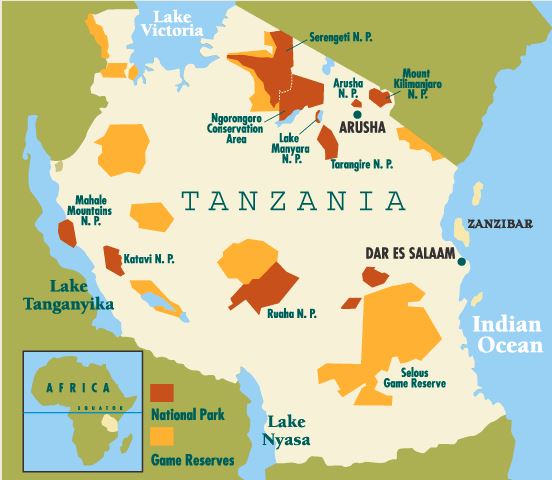
Serengeti National Park
Serengeti National Park, located in northern Tanzania, is one of the most famous and iconic wildlife reserves in the world. Established in 1951, the park spans approximately 14,750 square kilometers (5,700 square miles) and is renowned for its annual migration of over 1.5 million white-bearded wildebeest and 250,000 zebras, as well as for its diverse ecosystem and abundant wildlife.
Slideshow Gallery

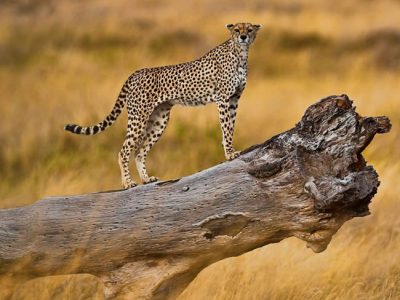
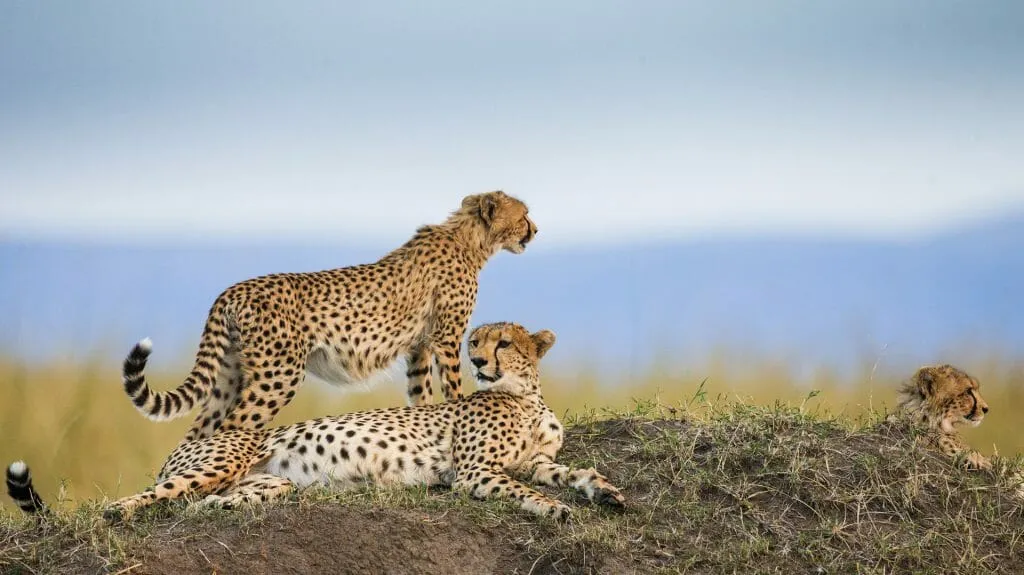
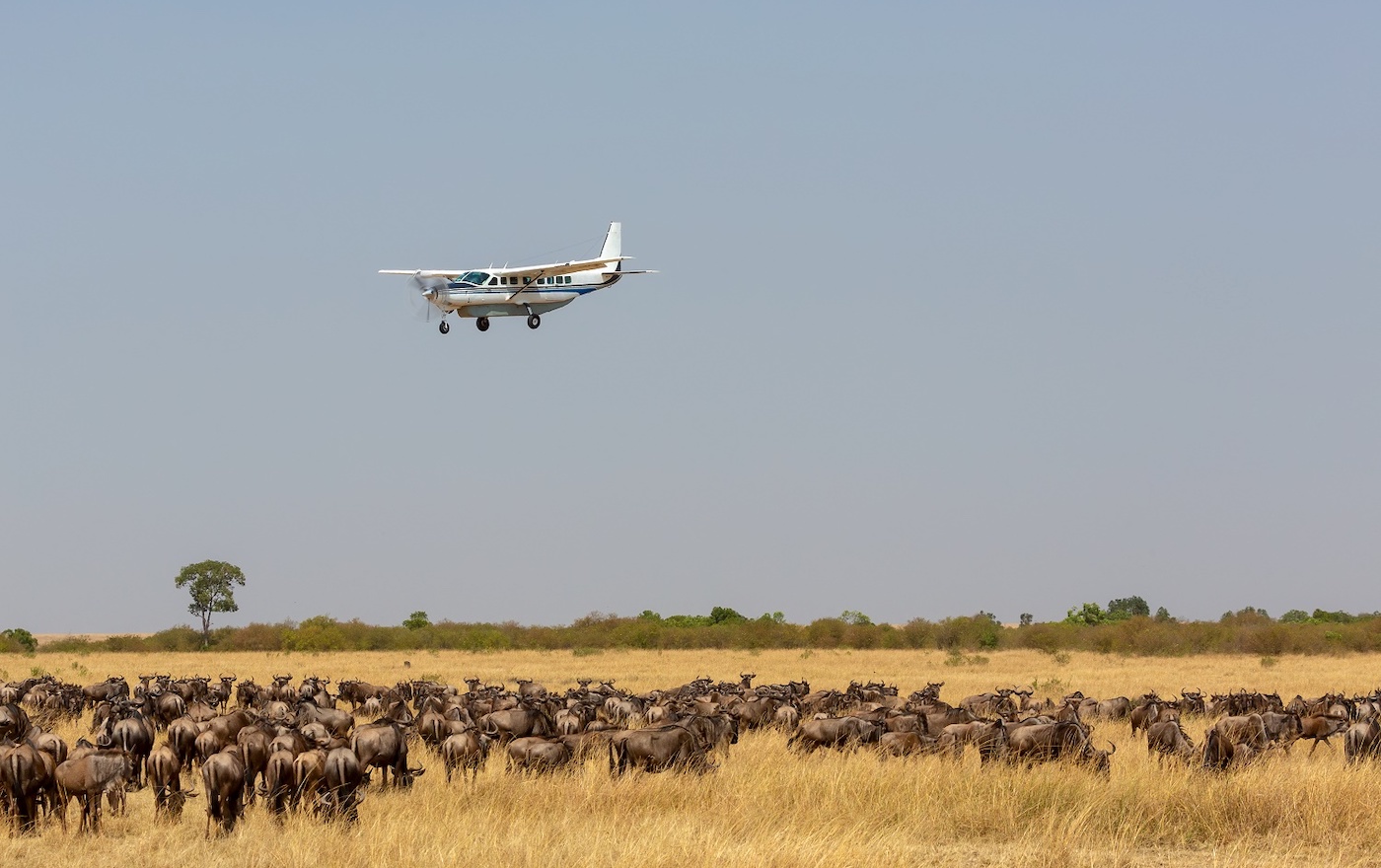
Key Features and Attractions
-
1. Great Migration:
The Serengeti hosts one of the most spectacular wildlife events on the planet – the Great Migration. This massive movement of wildebeest, zebras, and other grazing animals travels in a circular route between the Serengeti and Kenya's Maasai Mara in search of fresh grazing and water. This phenomenon attracts numerous predators such as lions, cheetahs, and crocodiles. -
2. Diverse Ecosystems:
The park features a variety of landscapes, including savannas, woodlands, riverine forests, and swamps. This diversity supports a wide range of flora and fauna. -
3. Big Five and Other Wildlife:
Dress in layers to accommodate the changing weather conditions. Ensure you have appropriate footwear and equipment for the journey. -
4. Seronera Valley:
Located in the heart of the park, the Seronera Valley is known for its year-round water supply, which attracts a high concentration of wildlife, making it a prime spot for game viewing. -
5. Grumeti and Mara Rivers:
These rivers are crucial crossing points during the Great Migration, where dramatic and often perilous river crossings can be observed as the herds face crocodile-infested waters.
Conservation and Tourism
Serengeti National Park plays a crucial role in conservation efforts, protecting not only the resident wildlife but also the delicate ecosystems. It is a UNESCO World Heritage Site, recognized for its outstanding natural value. Tourism in the park is well-developed, offering various activities such as:
- 1. Game Drives: Guided tours in safari vehicles to spot and photograph wildlife.
- 2. Hot Air Balloon Safaris: Providing a unique aerial perspective of the vast plains and wildlife.
- 3. Walking Safaris: Led by experienced guides, these allow for a closer and more intimate experience with nature.
-
4. Cultural Visits:
Interactions with the local Maasai communities to learn about their culture and traditions. -
5. Grumeti and Mara Rivers:
These rivers are crucial crossing points during the Great Migration, where dramatic and often perilous river crossings can be observed as the herds face crocodile-infested waters.
Serengeti National Park remains a symbol of Africa's wild beauty and a testament to the importance of wildlife conservation. Whether you're an avid photographer, a nature enthusiast, or simply seeking an unforgettable adventure, the Serengeti offers a truly unique and awe-inspiring experience.
Best Time to Visit
While the park offers exceptional wildlife viewing throughout the year, the timing of the Great Migration heavily influences the best time to visit:
- December to March: Calving season in the southern Serengeti, offering opportunities to see newborn animals and predator-prey interactions.
- June to October: The dry season, which is ideal for general wildlife viewing as animals gather around water sources. This period also includes the dramatic river crossings.
Access and Accommodation
- Access: The park is accessible via road or air, with several airstrips serving different areas within the park.
- Accommodation: Options range from luxury lodges and tented camps to budget-friendly campsites, ensuring a variety of experiences for different types of travelers.
Key Areas
Seronera Valley:
- Known for year-round water supply, offering excellent game viewing opportunities.
- Central location makes it a hub for safari activities.
Grumeti and Mara Rivers:
- Crucial crossing points during the Great Migration, where dramatic and often dangerous river crossings can be observed.
Lobo Area:
- Northern region known for its rugged terrain and rich wildlife, especially during the migration.
Lobo Area:
- Northern region known for its rugged terrain and rich wildlife, especially during the migration.
Western Corridor:
- Extending to Lake Victoria, this area is known for the Grumeti River and the large Nile crocodiles that inhabit it.
Interesting Facts
- Name: "Serengeti" comes from the Maasai word "siringet," meaning "endless plains."
- Migration Distance: The Great Migration covers a distance of around 800 kilometers (500 miles) annually in a circular pattern.
- Cultural Heritage: The Serengeti region is also rich in archaeological sites, including Olduvai Gorge, where some of the earliest human fossils have been found.
Manyara National Park
Manyara National Park, officially known as Lake Manyara National Park, is a protected area in Tanzania situated in the northern part of the country. It spans approximately 325 square kilometers (125 square miles) and is renowned for its diverse ecosystems, stunning scenery, and abundant wildlife. Here are some key highlights about the park:
Slideshow Gallery
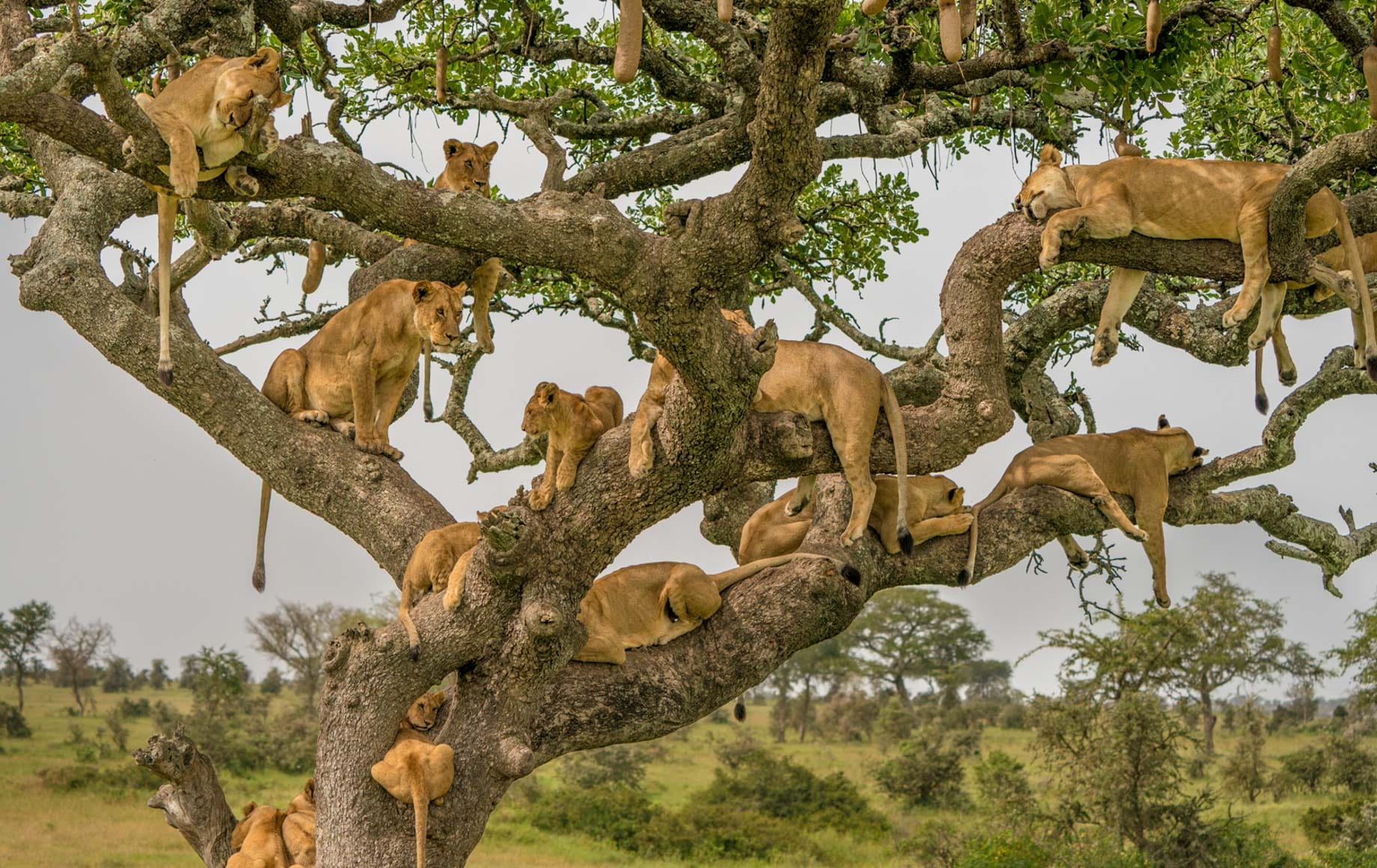
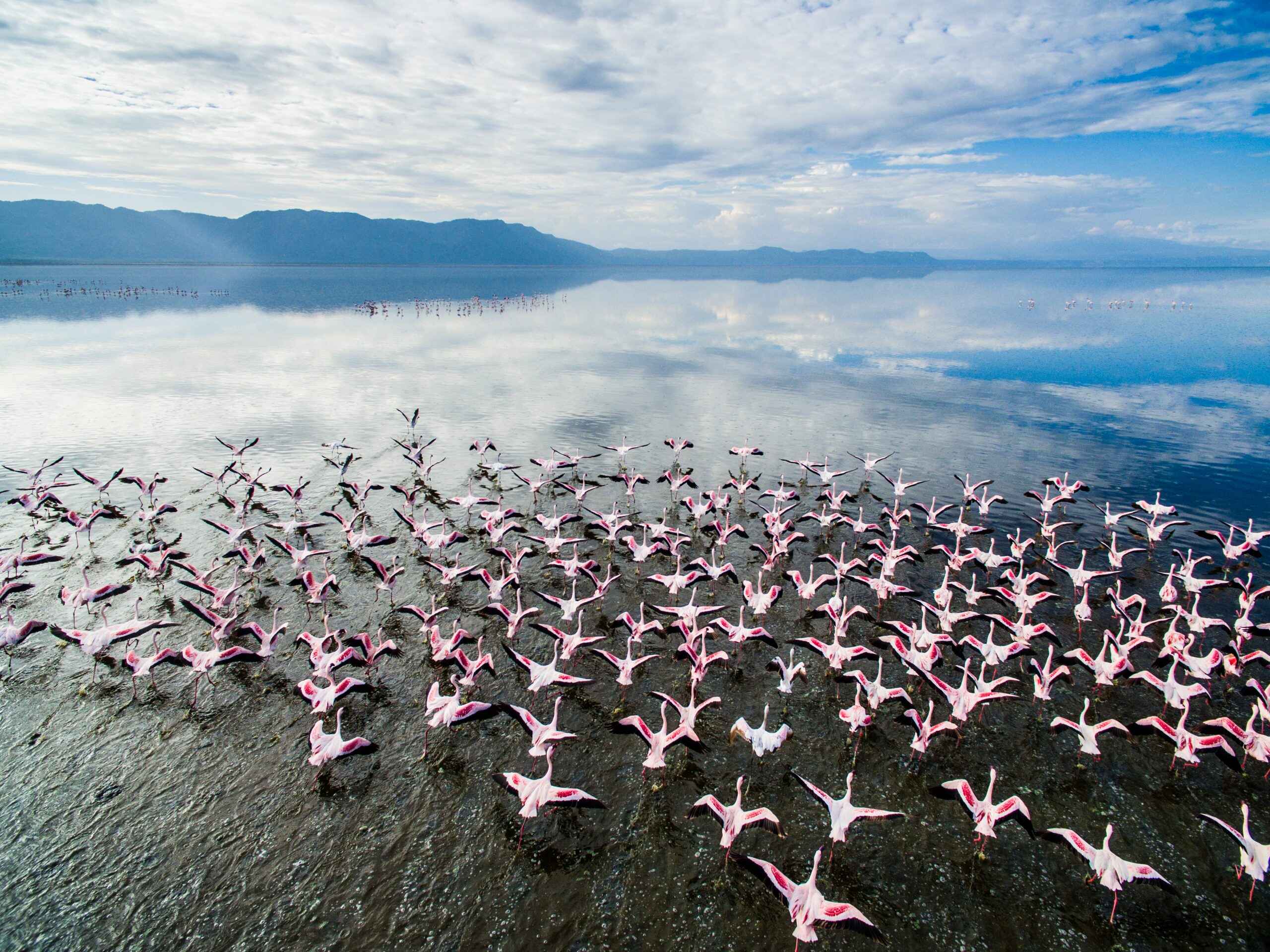
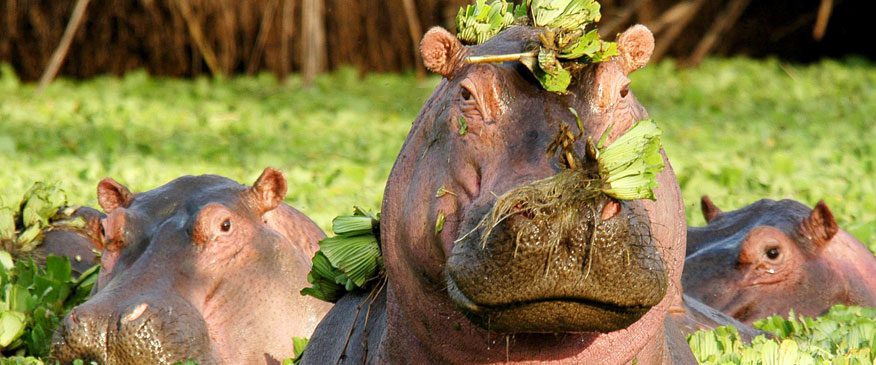
Geographic Features
-
1. Lake Manyara:
The park is named after Lake Manyara, a shallow, alkaline lake that covers about two-thirds of the park. The lake attracts a vast array of birdlife, particularly flamingos, which are often seen in large flocks. -
2. Great Rift Valley:
The park is located within the Great Rift Valley, with steep escarpments providing a dramatic backdrop. The terrain includes a combination of groundwater forests, acacia woodlands, and open grasslands..
Wildlife
- 1. Tree-Climbing Lions: One of the park's unique attractions is its population of tree-climbing lions. These lions are often seen lounging in the branches of acacia trees, a behavior not commonly observed in other lion populations.
- 2. Elephants: The park is home to a large number of elephants, and visitors frequently have close encounters with these majestic animals.
- 3. Birdlife: Lake Manyara National Park is a birdwatcher's paradise with over 400 species of birds recorded. Besides flamingos, you can see pelicans, storks, herons, and numerous other waterfowl.
-
4. Other Wildlife:
The park supports a variety of other animals, including buffalo, giraffes, zebras, wildebeests, hippos, and several species of primates.
Conservation Efforts
Lake Manyara National Park is managed by the Tanzania National Parks Authority (TANAPA), which works to protect its ecosystems and wildlife. Conservation efforts include anti-poaching measures, habitat restoration, and community engagement to promote sustainable tourism and environmental stewardship.
Best Time to Visit
The best time to visit Lake Manyara National Park depends on what you are most interested in experiencing:
-
Dry Season (June to October)
- Best for Game Viewing: The dry season is ideal for spotting large mammals as the vegetation is thinner and animals congregate around water sources, making them easier to see. Elephants, lions, giraffes, and other wildlife are more visible.
- Comfortable Weather: The weather is generally dry and sunny with fewer mosquitoes, making it more comfortable for safaris.
- Less Muddy Conditions: The roads and trails within the park are less muddy, making it easier to navigate.
-
Wet Season (November to May)
- Best for Bird Watching: The wet season is perfect for bird enthusiasts as migratory birds arrive, and the resident bird populations are at their peak. The park’s birdlife is especially vibrant during this time.
- Lush Scenery: The landscape is green and lush, with the lake full and the park's flora thriving. This period offers beautiful scenery for photography.
- Fewer Tourists: There are generally fewer tourists during the wet season, leading to a more exclusive experience.
- Baby Animals: Many animals give birth during the wet season, so you might see newborns and observe interesting behaviors.
Accessibility
The park is accessible by road and is a short drive from the town of Arusha, making it a convenient stop for tourists visiting other northern circuit parks like Serengeti National Park and Ngorongoro Crater.
Overall, Lake Manyara National Park offers a unique blend of natural beauty, diverse wildlife, and rich birdlife, making it a must-visit destination for nature lovers and wildlife enthusiasts visiting Tanzania.
Ngorongoro National Park
Ngorongoro National Park, officially known as the Ngorongoro Conservation Area, is a UNESCO World Heritage site located in northern Tanzania. This unique conservation area is renowned for its stunning landscapes, diverse wildlife, and significant archaeological sites.
Slideshow Gallery
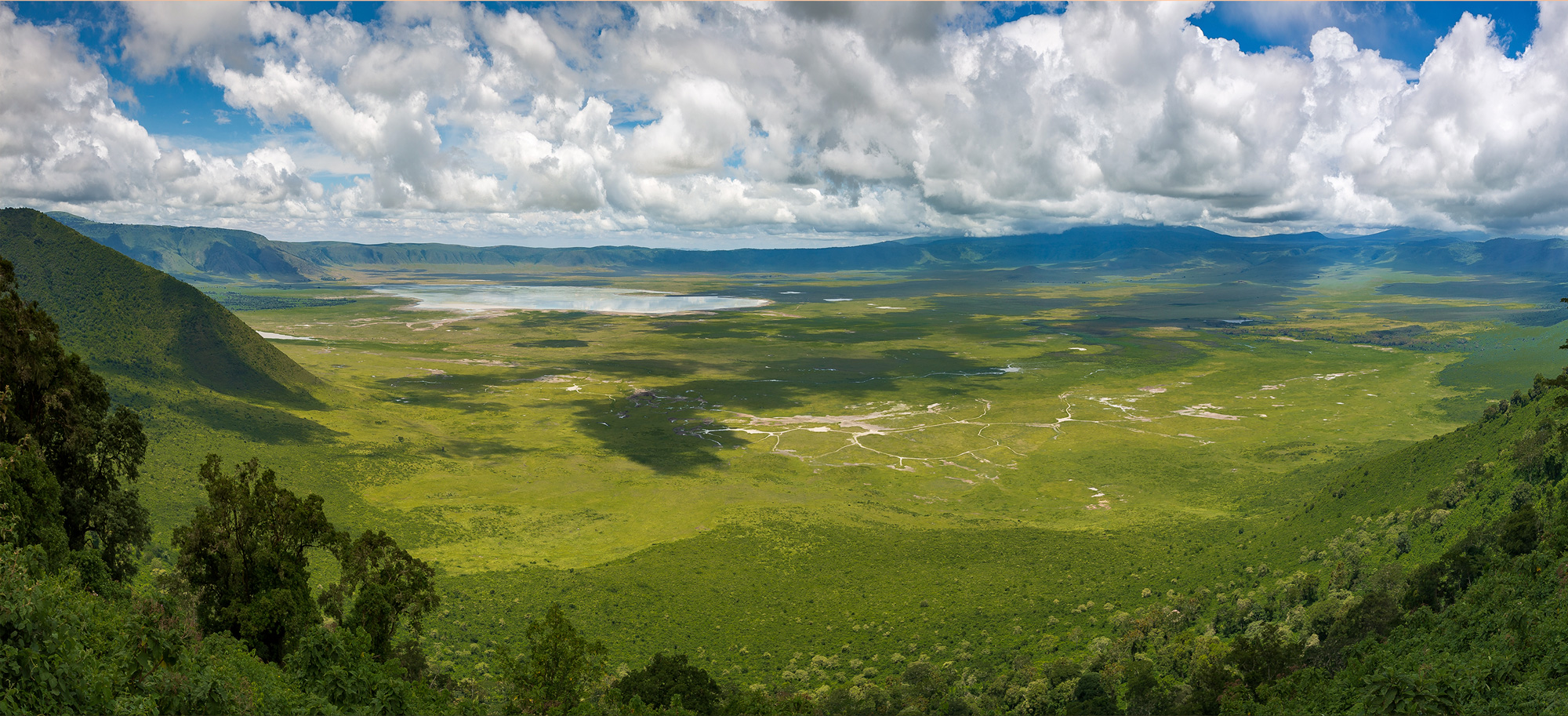
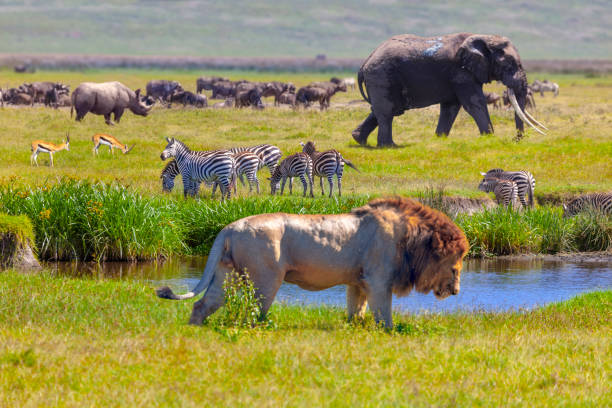
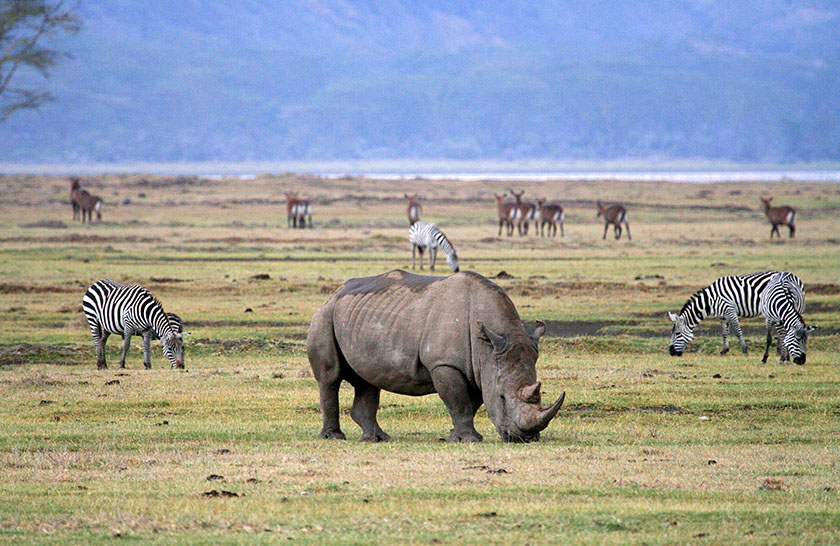
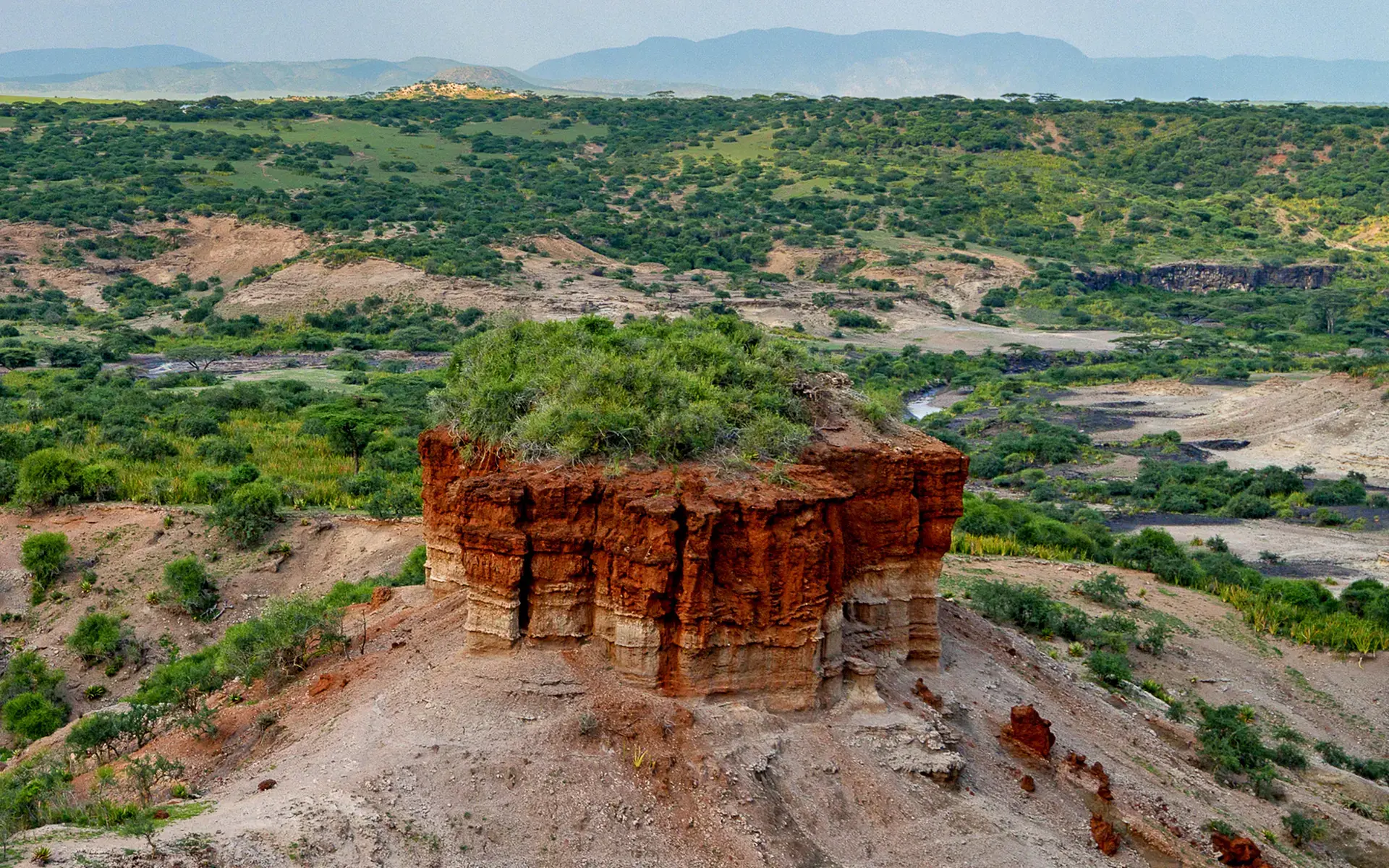
Key Features
1. Ngorongoro Crater:
- The most famous feature, Ngorongoro Crater, is the world's largest inactive, intact volcanic caldera. It is about 20 kilometers (12 miles) in diameter and 600 meters (2,000 feet) deep.
- The crater floor is a haven for wildlife, including the Big Five (lion, elephant, buffalo, leopard, and rhinoceros) and hosts a dense population of animals due to its enclosed nature and abundant resources.
2. Wildlife:
- Beyond the crater, the conservation area includes diverse habitats ranging from forests and savannas to wetlands and highland plains.
- The area supports a rich array of fauna, such as wildebeest, zebras, gazelles, hyenas, cheetahs, and various bird species. It's also a critical habitat for the endangered black rhino.
3. Olduvai Gorge:
- This archaeological site within the conservation area is one of the most important paleoanthropological locations in the world. It has provided significant insights into early human evolution, with discoveries including early hominid fossils and ancient tools.
4. Cultural Heritage:
- The area is inhabited by the Maasai people, who live alongside the wildlife and continue to practice their traditional pastoral lifestyle. The Maasai have coexisted with the wildlife here for centuries, making the area a unique example of multiple land-use practices.
5. Conservation Efforts:
- Ngorongoro Conservation Area Authority (NCAA) manages the park, balancing the needs of wildlife conservation, archaeology, and the Maasai communities. This multifaceted approach helps preserve the area's ecological and cultural integrity.
Best Time to Visit
The best time to visit Ngorongoro Conservation Area depends on what you want to experience, but generally, the dry season from June to October is considered the ideal time for wildlife viewing. Here are the details for each season:
-
Dry Season (June to October)
- Wildlife Viewing: The sparse vegetation and limited water sources make it easier to spot wildlife as animals congregate around waterholes and rivers.
- Weather: The weather is typically dry and sunny with cooler temperatures, especially in the mornings and evenings.
- Road Conditions: Roads are generally in better condition, making travel within the park easier.
-
Wet Season (November to May)
- Scenery: The landscape is lush and green, providing beautiful scenery and great photographic opportunities.
- Birdwatching: This is the best time for birdwatching as migratory birds are present, and the resident bird populations are thriving.
- Calving Season: From January to February, many animals give birth, which attracts predators and provides an excellent opportunity to witness predator-prey interactions.
- Fewer Crowds: There are generally fewer tourists, which can make for a more serene experience.
Accessibility
- Location: About 180 kilometers west of Arusha, a major city in Tanzania.
- Transport: Accessible by road from Arusha or via small aircraft to nearby airstrips. Many tour operators offer organized safaris, including transportation, accommodation, and guided tours.
Ngorongoro Conservation Area offers a unique blend of natural beauty, rich wildlife, and deep historical significance, making it a must-visit destination for nature enthusiasts, historians, and adventurers alike.
Tarangire National park
Tarangire National Park is one of Tanzania's most beautiful and ecologically diverse national parks. Located in the Manyara Region, it covers approximately 2,850 square kilometers (1,100 square miles) and is renowned for its vast herds of elephants and iconic baobab trees.
Slideshow Gallery
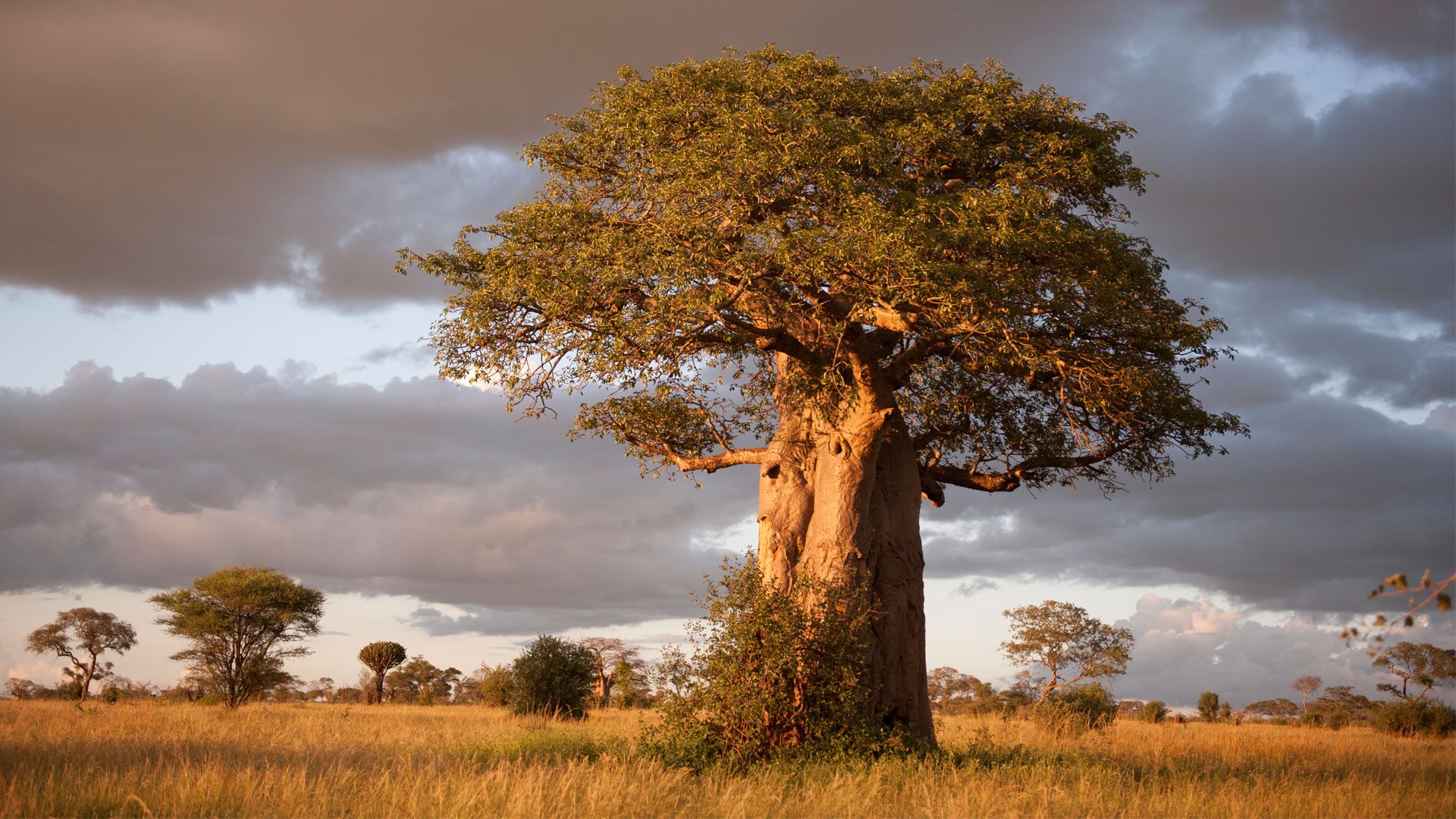
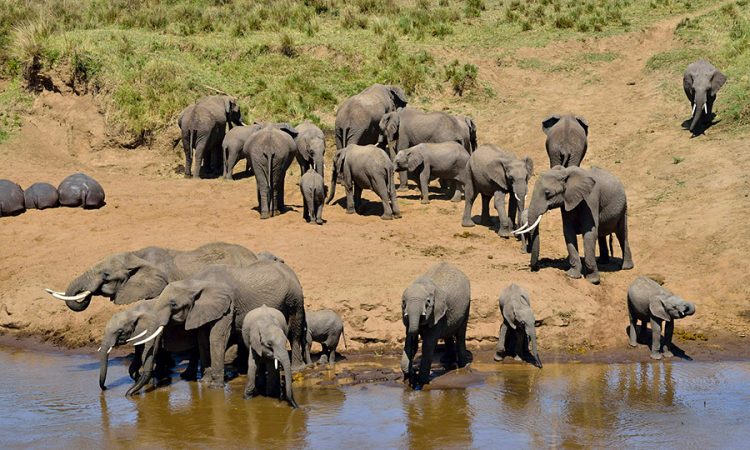
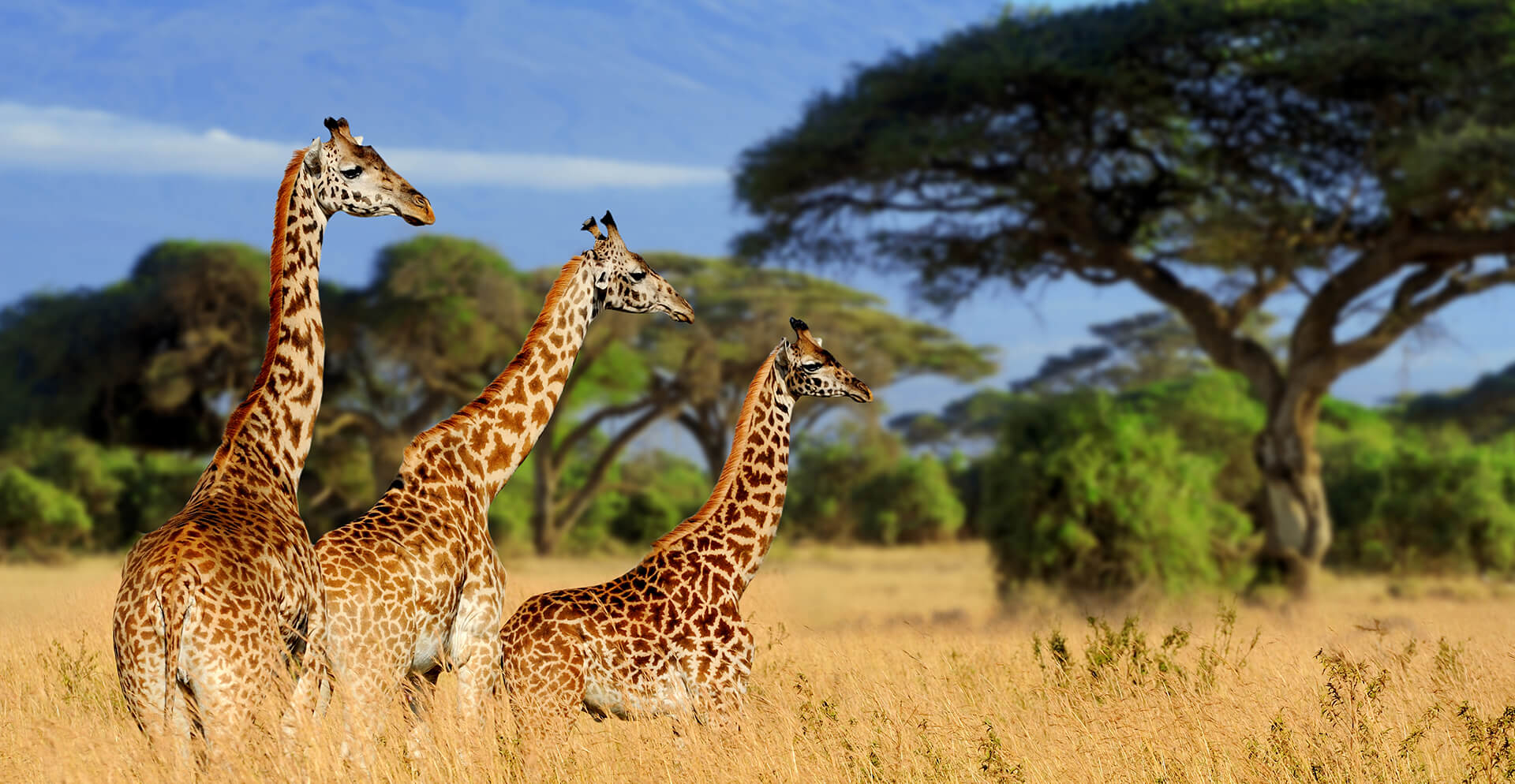
Key Features of Tarangire National Park
- 1. Wildlife: Tarangire is famous for its large herds of elephants. During the dry season, thousands of animals migrate to the park's Tarangire River, making it an excellent location for game viewing. Other wildlife includes lions, leopards, cheetahs, giraffes, buffaloes, and numerous bird species.
- 2. Baobab Trees: The park is dotted with majestic baobab trees, some of which are estimated to be over a thousand years old. These trees provide a unique and dramatic landscape, especially when silhouetted against the African sunset.
- 3. Tarangire River: This permanent river is the park's lifeline, attracting wildlife from far and wide during the dry season. It offers visitors great opportunities to observe animals congregating around waterholes.
- 4. Bird Watching: With over 550 bird species, Tarangire is a paradise for bird watchers. Some notable species include the yellow-collared lovebird, rufous-tailed weaver, and ashy starling.
- 5. Diverse Landscapes: The park's terrain varies from open grasslands and savannah to swamps and riverine forests, providing a range of habitats for different species and enhancing the park's scenic beauty.
Activities:
- 1. Game Drives: The most popular activity, offering close-up views of wildlife. Both day and night drives are available.
- 2. Walking Safaris: Led by experienced guides, these provide an intimate way to explore the park and learn about its ecosystems.
- 3. Bird Watching: Dedicated birding tours can be arranged, focusing on the park’s rich avian life.
- 4. Cultural Visits: Interactions with the local Maasai communities offer insights into their traditional way of life.
Tarangire National Park is a must-visit destination for anyone interested in experiencing the rich wildlife and unique landscapes of Tanzania. Its combination of abundant wildlife, iconic baobab trees, and diverse habitats makes it a standout location for safaris and nature enthusiasts.
Best Time to Visit
The best time to visit Tarangire National Park is during the dry season from June to October. During this period, wildlife congregates around the Tarangire River, making it easier to spot a variety of animals. The wet season, from November to May, is also a good time for bird watching and enjoying the lush, green landscapes, although wildlife is more dispersed.
- Dry Season (June to October): This is the best time for wildlife viewing as animals gather around water sources, and the vegetation is less dense, making it easier to spot animals.
- Wet Season (November to May): The park is lush and green, and it's an excellent time for birdwatching as migratory species arrive. However, wildlife viewing can be more challenging due to thicker vegetation and animals dispersing away from the river.
Accessibility
The park offers various accommodation options, including luxury lodges, tented camps, and budget-friendly campsites. Some popular lodges are Tarangire Sopa Lodge, Tarangire Treetops, and Tarangire Safari Lodge.
Conservation Efforts
Tarangire National Park is managed by the Tanzania National Parks Authority (TANAPA), which works to preserve the park's ecosystems and biodiversity. Efforts include anti-poaching measures, habitat restoration, and community engagement programs to promote conservation awareness.
Arusha National park
Arusha National Park is a small but diverse protected area located in northeastern Tanzania, near the town of Arusha. It covers an area of approximately 137 square kilometers and is renowned for its varied landscapes and rich biodiversity. Here are some key features and highlights of Arusha National Park:
Slideshow Gallery
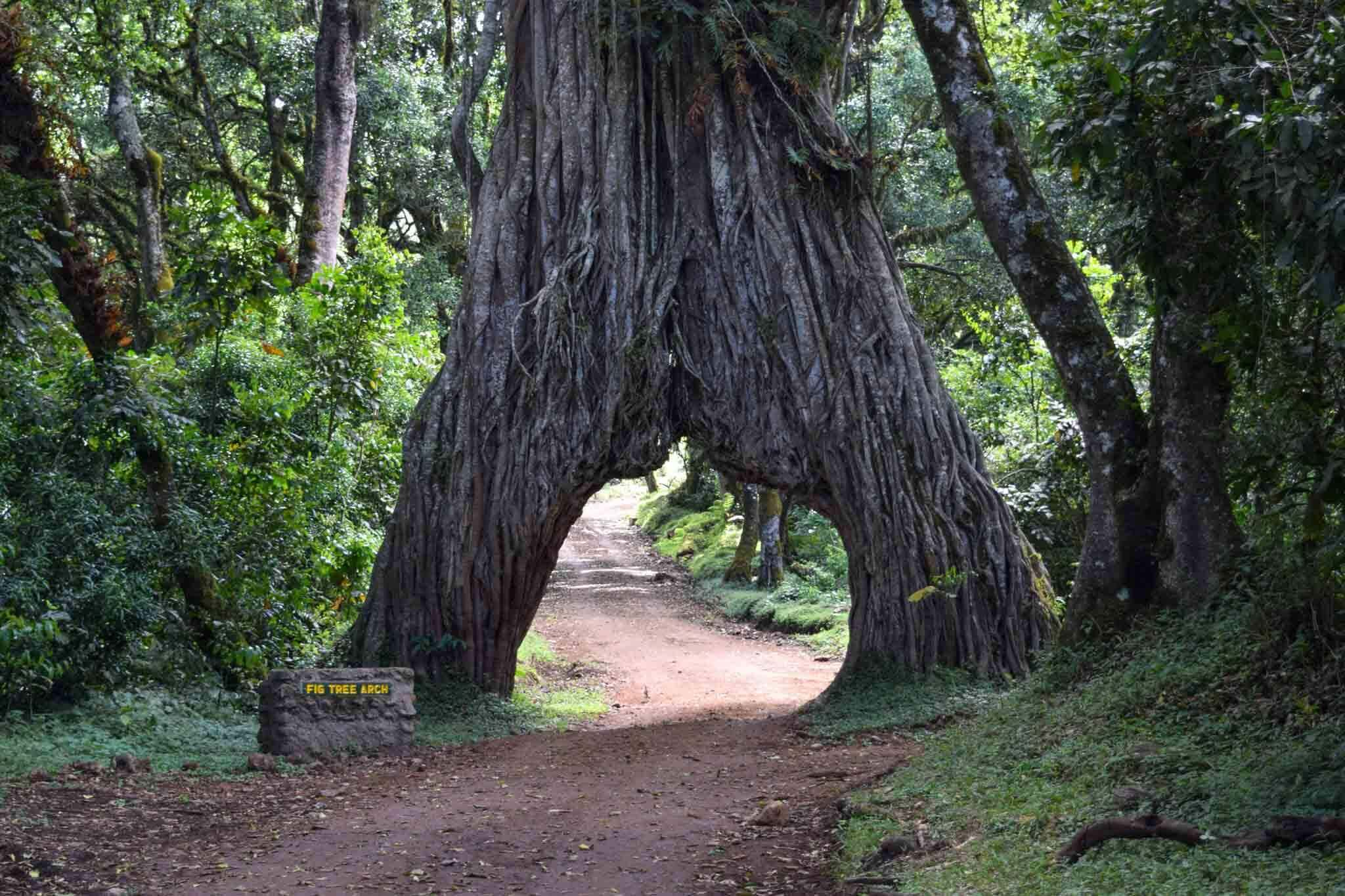
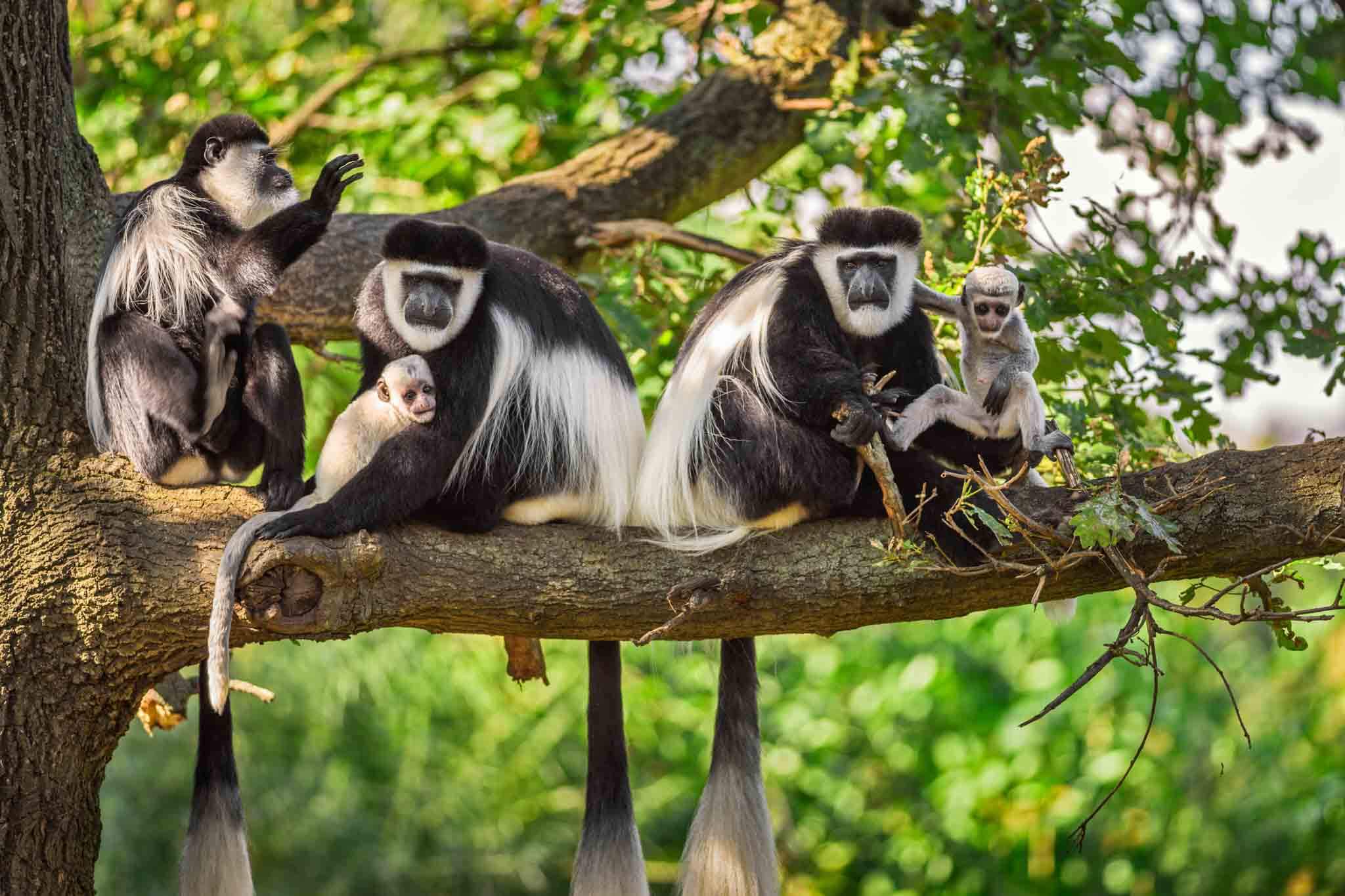
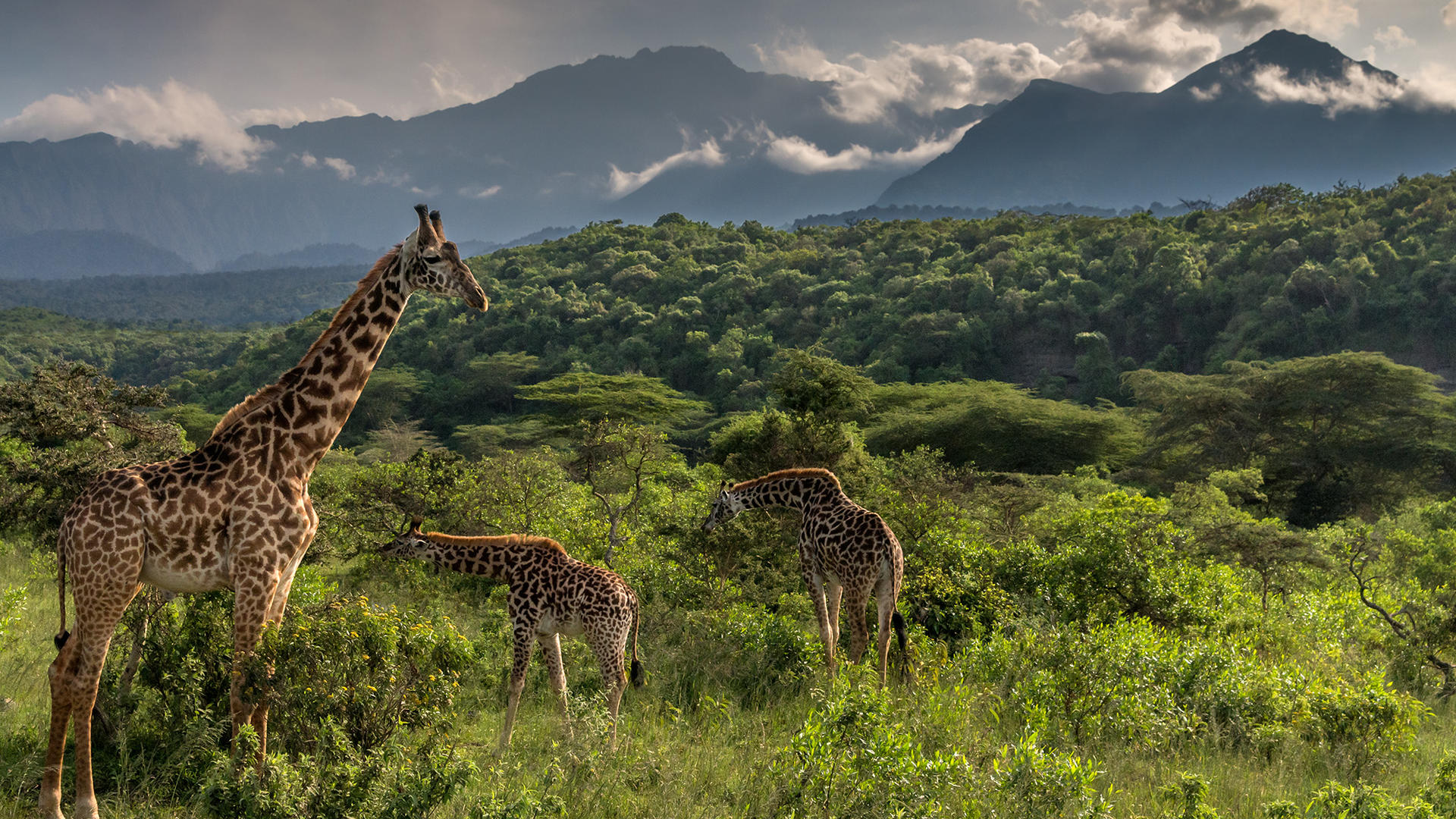
Key Features of Arusha National Park
1. Mount Meru:
- Volcanic Peak: Mount Meru, an active stratovolcano, is the park's most prominent feature, standing at 4,566 meters (14,980 feet). It is the second-highest mountain in Tanzania after Mount Kilimanjaro.
- Trekking: The mountain offers challenging yet rewarding trekking opportunities, providing stunning views and diverse flora and fauna.
2. Ngurdoto Crater:
- Crater Wildlife: This extinct volcanic crater is home to lush forests and a variety of wildlife, including buffalo, warthogs, and monkeys. It is often referred to as a "mini Ngorongoro" due to its similar geological features.
3. Momella Lakes:
- Birdwatching Paradise: The series of seven shallow lakes are alkaline and attract a myriad of bird species, including flamingos, pelicans, and herons. The lakes are also frequented by waterbucks, zebras, and giraffes.
4. Diverse Ecosystems:
- Forest and Grassland: The park features diverse habitats, from montane forests on the slopes of Mount Meru to savannah and swampy areas around the lakes. This diversity supports a wide range of wildlife.
- Wildlife: Visitors can expect to see elephants, giraffes, hippos, leopards, and various antelope species, along with a rich birdlife.
Activities
- 1. Game Drives: Safaris through the park offer opportunities to see a variety of animals in their natural habitats.
- 2. Walking Safaris: Unique to Arusha National Park, guided walking tours allow visitors to explore the park's landscapes and wildlife on foot.
- 3. Canoeing: On the Momella Lakes, visitors can take guided canoe tours for a different perspective on the park's wildlife and scenery.
- 4. Mountain Climbing: Trekking up Mount Meru is a popular activity, providing stunning views of both the park and nearby Mount Kilimanjaro.
Arusha National Park is a hidden gem that offers a more intimate and varied wildlife experience compared to some of Tanzania's larger parks. Its proximity to Arusha makes it a convenient and worthwhile addition to any itinerary in the region.
Best Time to Visit
The best time to visit Arusha National Park largely depends on your interests and what you hope to experience. Here's a breakdown of the different seasons and what they offer:
Dry Season (June to October)
- Best for Wildlife Viewing: The dry season is ideal for spotting wildlife as animals congregate around water sources, and the vegetation is less dense, making it easier to see animals.
- Weather: The weather is generally dry and sunny, with cooler temperatures, especially in the mornings and evenings. Daytime temperatures are pleasant, ranging from 20°C to 30°C (68°F to 86°F).
- Peak Tourist Season: This is also the peak tourist season, so the park may be busier, and accommodation prices can be higher.
Wet Season (November to May)
- Green Season: The landscape is lush and green, with blooming flowers and a more vibrant scenery. This season is perfect for photography due to the beautiful landscapes and clear skies.
- Bird Watching: This is the best time for birdwatching as migratory birds arrive, adding to the park's already impressive bird population.
- Calving Season: Many animals give birth during the wet season, so you might see young animals.
- Rainfall: The wet season is divided into the short rains (November to December) and the long rains (March to May). The short rains are usually brief and less disruptive, while the long rains can make some roads and trails muddy and difficult to navigate.
Accessibility
- Location: The park is located about 25 kilometers east of Arusha city, making it easily accessible by road. It is also conveniently close to Kilimanjaro International Airport.
- Accommodation: Options range from luxury lodges to basic campsites within and around the park, catering to various preferences and budgets.
Conservation Efforts
- Protected Area: As a designated national park, Arusha is protected under Tanzanian law, ensuring conservation of its unique ecosystems and wildlife.
- Community Involvement: Local communities are involved in conservation efforts, benefiting from tourism and sustainable practices.
Mountain Kilimanjaro National park
Mount Kilimanjaro National Park is a renowned national park located in Tanzania, centered around Africa's highest peak, Mount Kilimanjaro. The park covers an area of approximately 1,688 square kilometers and was declared a UNESCO World Heritage Site in 1987. Here's an overview of the park and its key features:
Slideshow Gallery
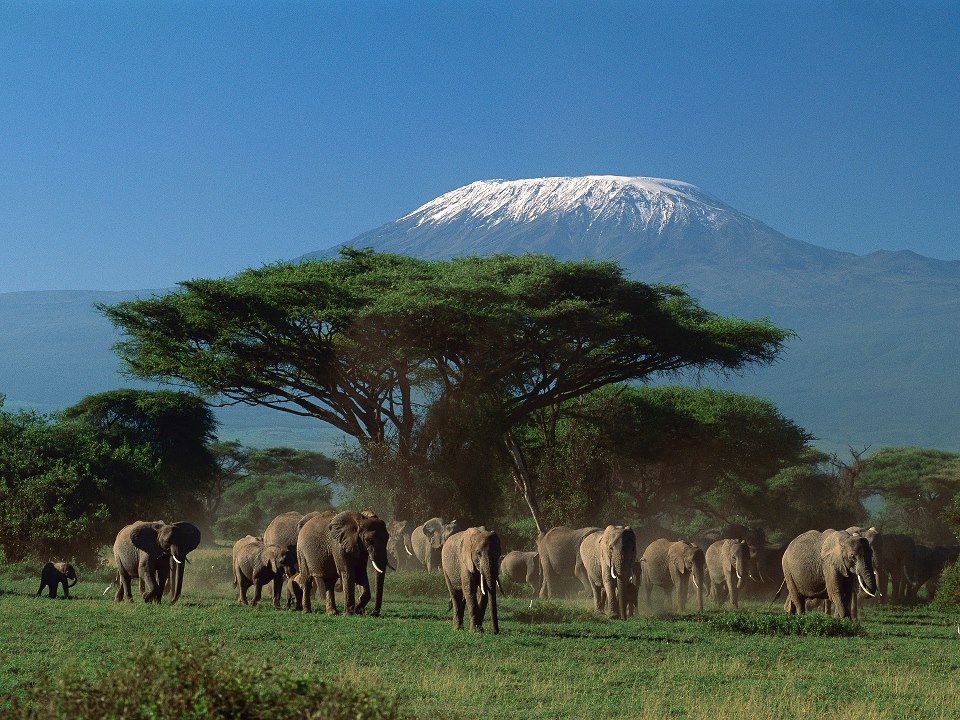
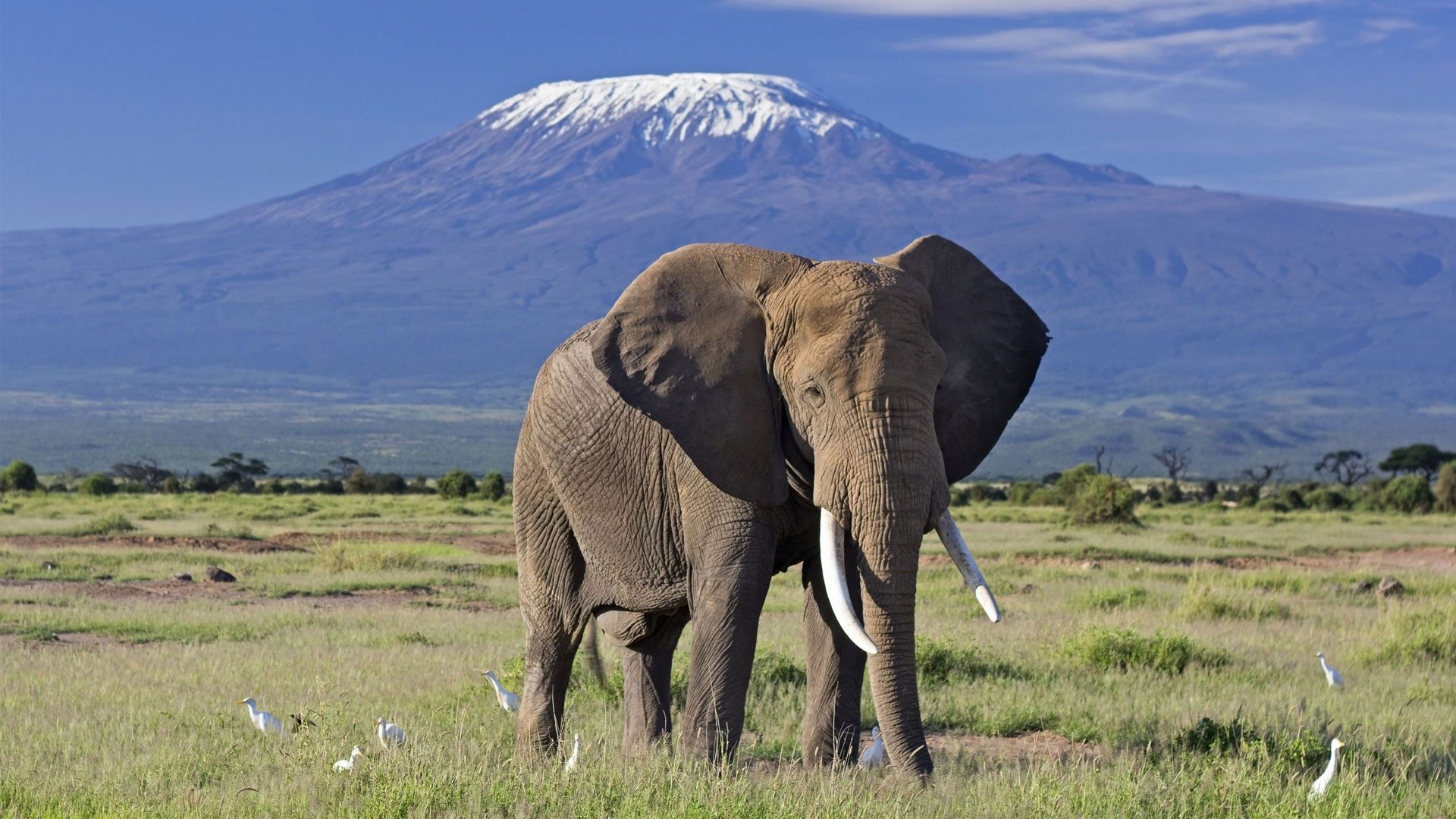
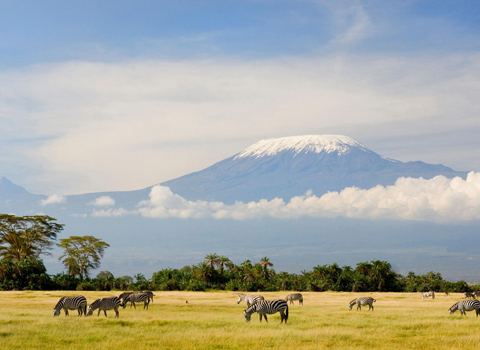
Key Features
1. Mount Kilimanjaro:
- Highest Peak: Mount Kilimanjaro stands at 5,895 meters (19,341 feet) above sea level, making it the tallest free-standing mountain in the world and the highest point in Africa.
- Summits: The mountain has three volcanic cones: Kibo, Mawenzi, and Shira. The highest point on Kibo's crater rim is Uhuru Peak.
- Volcanic Origin: Although it is a dormant volcano, Kilimanjaro last erupted approximately 360,000 years ago.
2. Diverse Ecosystems:
- Lowland Forests: The lower slopes are covered with lush tropical rainforests, home to a variety of wildlife including elephants, leopards, and buffaloes.
- Montane Forest: Higher up, the landscape transitions to montane forests with unique flora and fauna, such as the Kilimanjaro tree hyrax and a variety of bird species.
- Moorland Zone: At around 3,000 meters, the forest gives way to the moorland zone, characterized by heathers, giant groundsels, and lobelias.
- Alpine Desert: Higher still is the alpine desert zone, where vegetation is sparse and conditions are harsh.
- Arctic Summit: The summit zone is a glacial area with permanent ice and snow, despite being located near the equator.
3. Wildlife:
- Fauna: The park is home to a range of wildlife, including blue monkeys, colobus monkeys, bush babies, and several bird species. Large mammals like elephants and buffaloes are more commonly found in the montane forests and lower slopes.
- Birdlife: Birdwatchers can spot various species, including the Malachite sunbird and the rare Abbott’s starling.
4. Cultural Significance:
- Local Tribes: The Chagga people inhabit the areas around the mountain and have a rich cultural heritage. They rely on the fertile volcanic soil for agriculture.
- Historical Sites: There are several cultural and historical sites within and around the park, including Chagga caves and coffee farms.
Activities
- Climbing Routes: Several routes lead to the summit of Mount Kilimanjaro, including the Marangu, Machame, Lemosho, and Rongai routes. These vary in difficulty and scenery.
- Hiking and Trekking: Apart from summiting, there are numerous trails for shorter hikes and treks within the park, offering stunning views and diverse landscapes.
- Wildlife Safaris: Guided tours and safaris allow visitors to explore the rich biodiversity of the lower slopes and montane forests.
Mount Kilimanjaro National Park is not just a destination for climbers but also for nature enthusiasts, offering a unique blend of ecological diversity, cultural richness, and breathtaking landscapes.
Best Time to Visit
The best times to visit Mount Kilimanjaro National Park are during the dry seasons, which offer the most favorable conditions for trekking and wildlife viewing. Here are the optimal periods and their characteristics:
Dry Seasons:
-
January to March:
Weather: Generally clear skies and warmer temperatures.
Advantages: This period is less crowded than the June to October season. The visibility is often excellent, making it ideal for photography.
Temperatures: Warmer on the lower slopes, but it can be quite cold at higher altitudes.
Rainfall: There may be occasional short rains, but conditions are mostly dry. -
June to October:
Weather: This is the main dry season with very little rainfall.
Advantages: Ideal weather for trekking with stable and dry conditions. This period coincides with the peak tourist season, so trails may be busier. The visibility is often excellent, making it ideal for photography.
Temperatures: Cool and pleasant on the lower slopes, cold to freezing at higher elevations.
Wildlife: The lower slopes and forests are more accessible, offering better wildlife viewing opportunities.
Rainy Seasons (Less Recommended):
-
March to May:
Weather: Long rains with heavy and consistent rainfall.
Disadvantages: Trails can be very muddy and slippery, making trekking more challenging. Cloud cover may obscure views.
Crowds: Fewer tourists during this period, so it's less crowded.
Wildlife: Dense vegetation can make wildlife viewing more difficult. -
November to December:
Weather: Short rains with occasional downpours.
Disadvantages: Similar to the long rainy season, trails can be muddy, and the weather can be unpredictable.
Crowds: Less crowded compared to the dry seasons.
Wildlife: Rain can make wildlife viewing less reliable.
Conservation Efforts:
The Tanzanian government, along with international organizations, has implemented various conservation efforts to protect the park's unique ecosystems and wildlife. These efforts include anti-poaching measures, habitat restoration, and community-based conservation projects to involve local communities in protecting the park.
Mahale National Park Overview
Mahale National Park, located in western Tanzania, is a stunning and unique destination renowned for its biodiversity, stunning landscapes, and a large population of wild chimpanzees. Situated on the eastern shores of Lake Tanganyika, it offers visitors an unparalleled opportunity to explore one of Africa’s most pristine and remote wilderness areas.
Slideshow Gallery

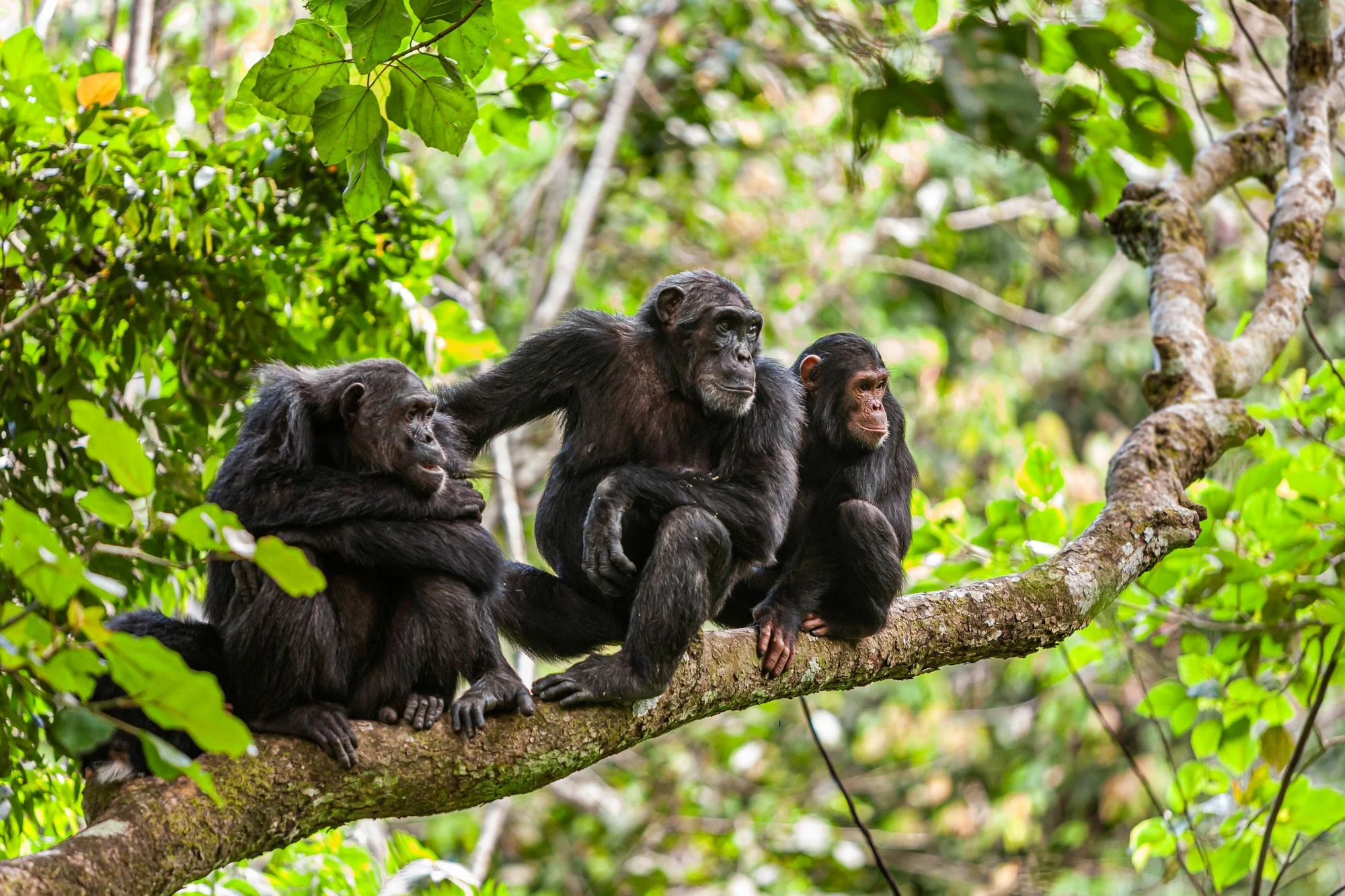
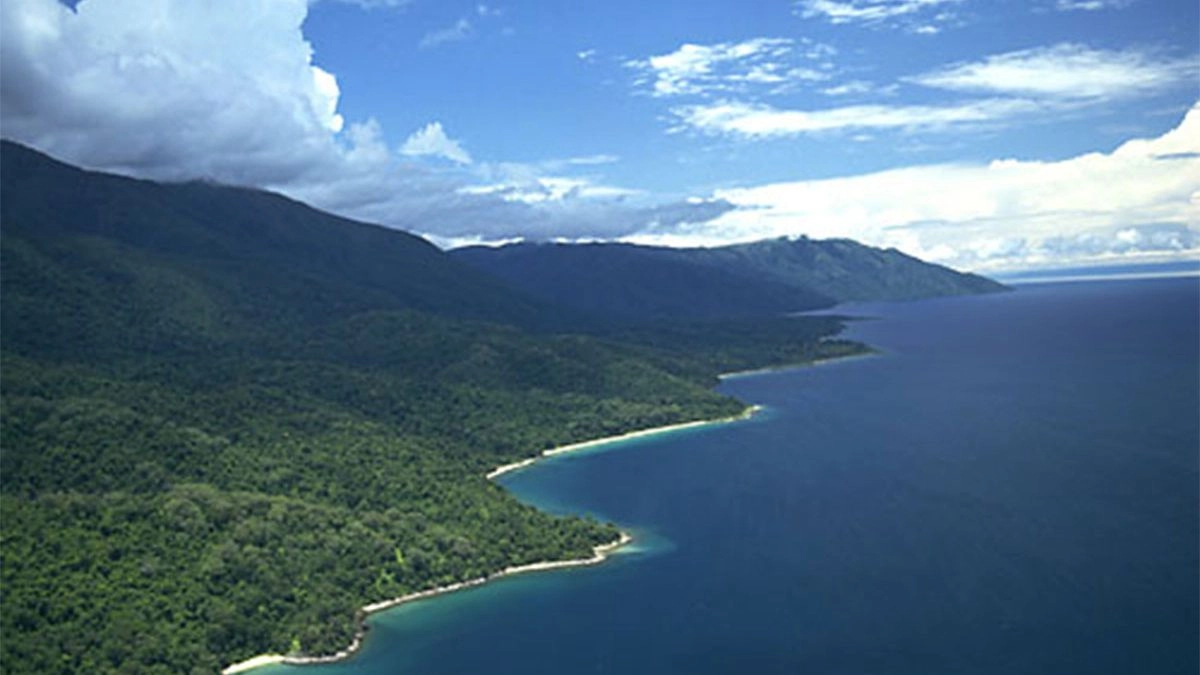
Location and Accessibility
Mahale National Park spans over 1,613 square kilometers and is nestled along the eastern shores of Lake Tanganyika. The park is best accessed by boat or charter flights, with the nearest major town being Kigoma. This remote location ensures that the park remains largely untouched and offers an authentic wilderness experience.
Wildlife
Mahale is most famous for its chimpanzee population. The park is home to over 1,000 chimpanzees, and visitors can embark on guided treks to observe these fascinating primates in their natural habitat. Besides chimpanzees, the park boasts a rich diversity of wildlife, including:
- Mammals: Lions, leopards, giraffes, elephants, and various species of antelope.
- Birds: Over 350 bird species, making it a birdwatcher’s paradise.
- Aquatic Life: The crystal-clear waters of Lake Tanganyika are home to numerous fish species, many of which are endemic to the lake.
Flora and Landscape
The park’s landscape is incredibly diverse, ranging from lush rainforests and alpine bamboo to grassy savannahs and pristine beaches. The lush forests of Mahale provide a habitat for a wide variety of plant species, some of which are unique to the region.
Activities
Visitors to Mahale National Park can engage in a variety of activities, including:
- Chimpanzee Tracking: The main attraction, offering a rare chance to see these primates up close.
- Hiking and Nature Walks: Numerous trails lead through the forest and up the Mahale Mountains, providing breathtaking views and opportunities to see diverse wildlife.
- Bird Watching: With its rich avian diversity, the park is a haven for bird enthusiasts.
- Fishing and Boating: Lake Tanganyika offers excellent fishing and boating experiences.
- Cultural Tours: Interactions with local communities around the park provide insights into the traditional lifestyles and cultures of the area.
Visitor Information
- Best Time to Visit: The dry season from June to October is the best time for chimpanzee tracking and wildlife viewing.
- Permits and Fees: Visitors need permits for chimpanzee tracking, which should be booked in advance.
- Guided Tours: It is recommended to explore the park with a guide for safety and a more informative experience.
Conservation Efforts
Conservation is a key focus in Mahale National Park. Efforts are made to protect the unique ecosystems and wildlife, particularly the endangered chimpanzees. The park management, in collaboration with various organizations, works on conservation projects and research to ensure the sustainability of this precious natural reserve.
Accommodation
Mahale National Park offers various accommodation options, ranging from luxury lodges and tented camps to basic campsites. These accommodations provide comfortable bases from which to explore the park and enjoy its natural beauty.
Conclusion
Mahale National Park is a gem of Tanzania, offering an extraordinary experience for nature lovers, adventure seekers, and wildlife enthusiasts. Its remote location, stunning scenery, and incredible biodiversity make it a must-visit destination for those looking to explore one of Africa’s most remarkable wilderness areas.
Nyerere National Park Overview
Nyerere National Park, named in honor of Tanzania's first president, Julius Nyerere, is one of Africa's largest and most diverse protected areas. Covering over 30,000 square kilometers, it is a part of the larger Selous Game Reserve, a UNESCO World Heritage Site renowned for its rich wildlife and untouched landscapes. This park offers visitors an unparalleled experience of Africa's natural beauty, with vast savannas, miombo woodlands, and the lifeblood of the Rufiji River.
Slideshow Gallery
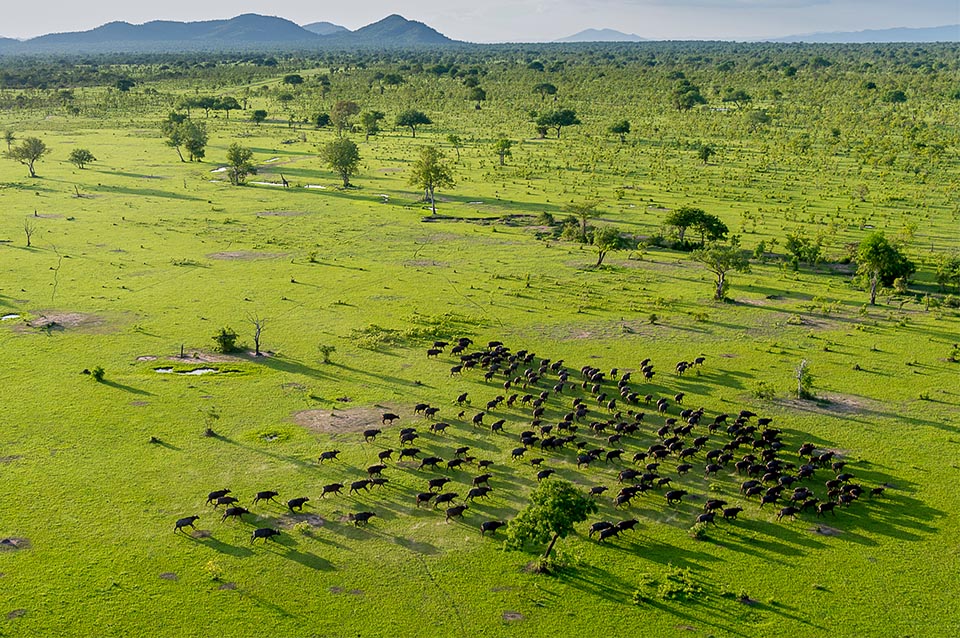
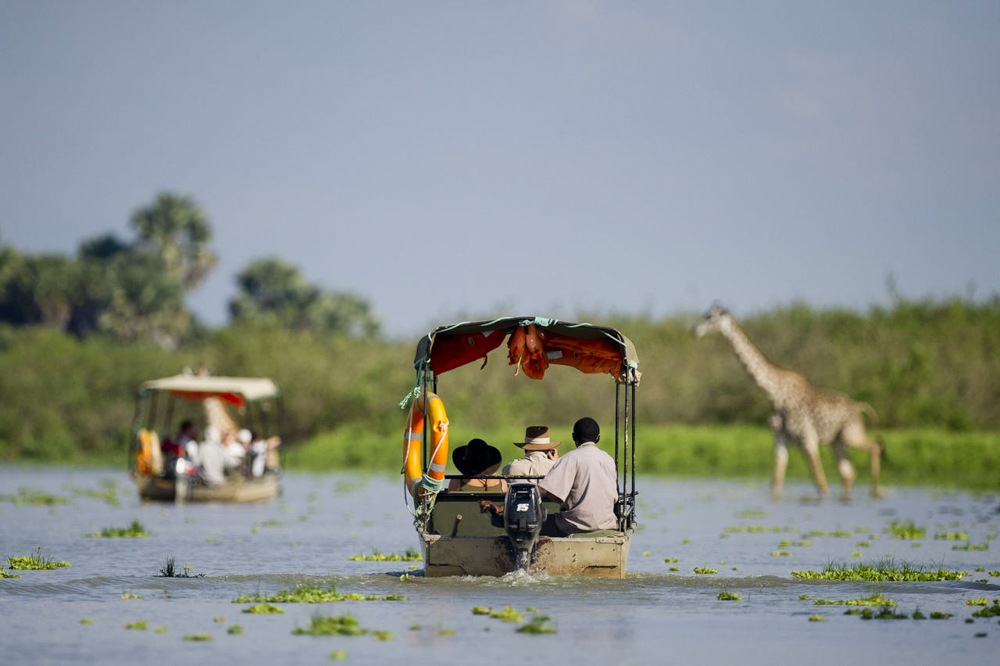
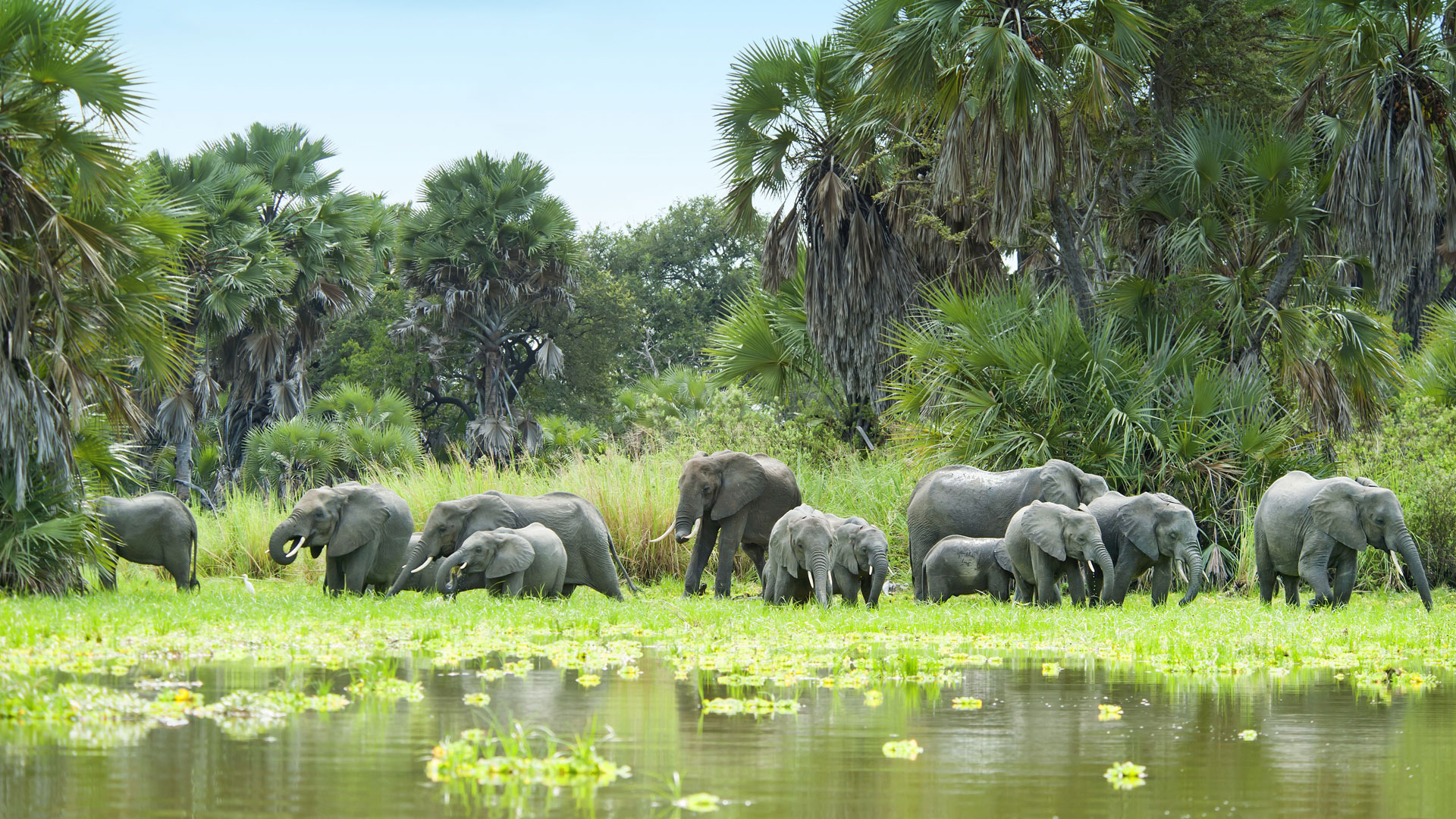
Wildlife:
Mahale National Park spans over 1,613 square kilometers and is nestled along the eastern shores of Lake Tanganyika. The park is best accessed by boat or charter flights, with the nearest major town being Kigoma. This remote location ensures that the park remains largely untouched and offers an authentic wilderness experience.
Wildlife
Nyerere National Park is a haven for wildlife enthusiasts. The park boasts a diverse range of fauna, including:
- Big Five: Lion, Elephant, Buffalo, Leopard, and Rhinoceros.
- Large Mammals: Hippopotamus, Giraffe, Zebra, Wildebeest, and African Wild Dog.
- Birdlife: Over 440 species of birds, making it a paradise for bird watchers.
Activities:
Visitors can immerse themselves in a variety of activities, such as:
- Game Drives: Explore the vast landscapes and encounter wildlife in their natural habitat.
- Boat Safaris: Cruise along the Rufiji River and witness hippos, crocodiles, and a plethora of bird species.
- Walking Safaris: Experience the thrill of tracking animals on foot with a knowledgeable guide.
- Bird Watching: Spot rare and exotic bird species in diverse habitats.
- Fishing: Try your hand at fishing in the Rufiji River, home to a variety of fish species.
Visitor Information
- Best Time to Visit: The dry season (June to October) is ideal for wildlife viewing, while the wet season (November to May) offers lush landscapes and vibrant birdlife.
- Permits and Fees: Entrance fees are applicable and vary for residents and non-residents. Ensure to check the latest rates before planning your visit.
- Guided Tours: It is recommended to explore the park with a guide for safety and a more informative experience.
Landscape and Scenery:
The park's landscape is a mix of open grasslands, acacia woodlands, and riverine forests. The Rufiji River, one of the longest rivers in East Africa, flows through the park, creating a network of channels, lakes, and swamps that are teeming with life.
Conservation Efforts
Nyerere National Park is committed to conservation and sustainable tourism. The park's management works tirelessly to protect endangered species and their habitats, partnering with local communities and international organizations to promote conservation awareness and practices.
Accommodation
A range of accommodation options are available to suit different tastes and budgets, from luxury lodges to tented camps, all designed to provide comfort while blending seamlessly with the natural surroundings.
Conclusion
Nyerere National Park is a must-visit destination for nature lovers, offering an unparalleled safari experience in one of Africa's most pristine wilderness areas. Whether you are seeking adventure, relaxation, or a deeper connection with nature, Nyerere National Park promises an unforgettable journey.
Katavi National Park Overview
Nestled in the remote southwest corner of Tanzania, Katavi National Park is one of Africa's most unspoiled wilderness areas. Covering approximately 4,471 square kilometers, this vast and rugged park offers an unparalleled safari experience for those seeking adventure off the beaten path.
Slideshow Gallery
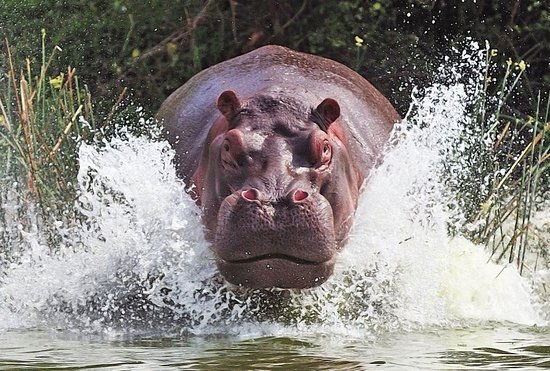
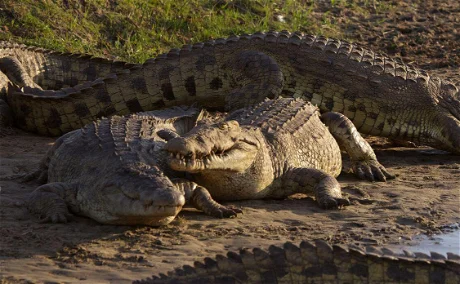
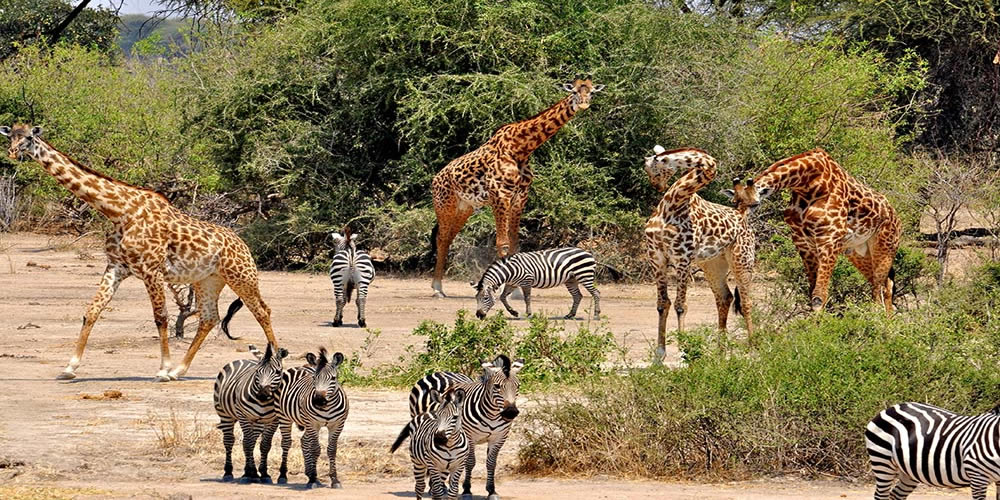
Unique Wildlife Encounters
Katavi National Park boasts a rich diversity of wildlife, making it a prime destination for avid wildlife enthusiasts. The park is renowned for its large herds of buffalo and elephants, which can often be seen in impressive numbers. Predators such as lions, leopards, and hyenas roam the park, creating thrilling opportunities for sightings. During the dry season, the Katuma River becomes a vital water source, attracting a multitude of animals, including hippos and crocodiles. Birdwatchers will also find paradise here, with over 400 bird species recorded, including the colorful lilac-breasted roller and the majestic fish eagle.
Scenic Landscapes
Katavi's landscapes are as diverse as its wildlife. From the vast floodplains of the Katuma River to the dense woodlands and seasonal lakes, the park offers a variety of ecosystems to explore. The iconic palm-fringed Lake Chada and the miombo woodland add to the park's scenic allure, providing breathtaking backdrops for photography and relaxation.
Activities and Experiences
Visitors to Katavi National Park can enjoy a range of activities designed to immerse them in the natural beauty and wildlife of the area:
- Game Drives: Experience the thrill of close-up encounters with wildlife on guided game drives through the park's diverse habitats.
- Walking Safaris: Explore the park on foot with an experienced guide, gaining a deeper understanding of the flora and fauna.
- Camping: For the adventurous, Katavi offers several campsites where you can sleep under the stars and listen to the sounds of the wild.
Best Time to Visit
The best time to visit Katavi National Park is during the dry season, from June to October, when wildlife congregates around the remaining water sources, making for spectacular viewing opportunities. The wet season, from November to April, transforms the park into a lush, green paradise, with abundant birdlife and fewer tourists.
Getting There
Katavi's remote location means it is less visited than other Tanzanian parks, adding to its charm. The park can be accessed via charter flights from Dar es Salaam, Arusha, or other major Tanzanian cities. For those seeking a more adventurous route, overland travel is possible, though it requires careful planning and a sturdy 4x4 vehicle.
Conservation Efforts
Katavi National Park is committed to preserving its unique ecosystems and wildlife. Conservation initiatives focus on anti-poaching measures, community engagement, and sustainable tourism practices. By visiting Katavi, you contribute to the ongoing efforts to protect this pristine wilderness for future generations.
Accommodation
A range of accommodation options are available to suit different tastes and budgets, from luxury lodges to tented camps, all designed to provide comfort while blending seamlessly with the natural surroundings.
Conclusion
Embark on an unforgettable journey to Katavi National Park and experience the raw, untamed beauty of Tanzania. Whether you're an avid wildlife photographer, a birdwatching enthusiasxt, or simply seeking solitude in nature, Katavi offers a safari adventure like no other.
Gombe National Park Overview
Nestled along the scenic shores of Lake Tanganyika in western Tanzania, Gombe National Park is a hidden gem that offers a unique blend of natural beauty, rich biodiversity, and remarkable scientific history. This park, though small at just 52 square kilometers, boasts an array of attractions that make it a must-visit destination for nature lovers and adventure seekers alike.
Slideshow Gallery
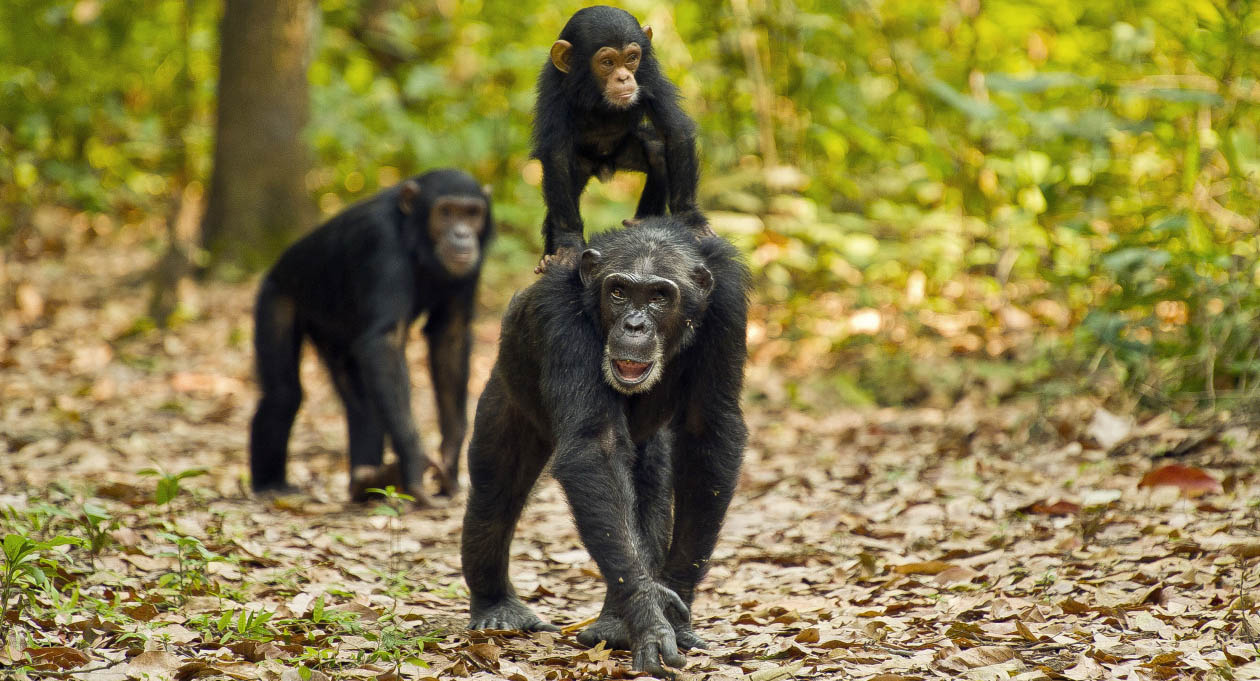
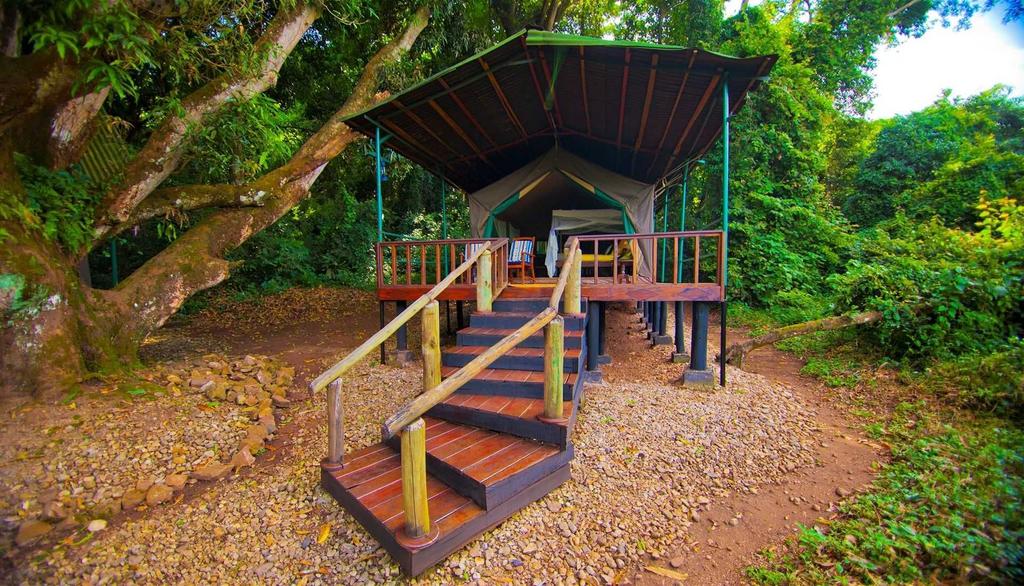
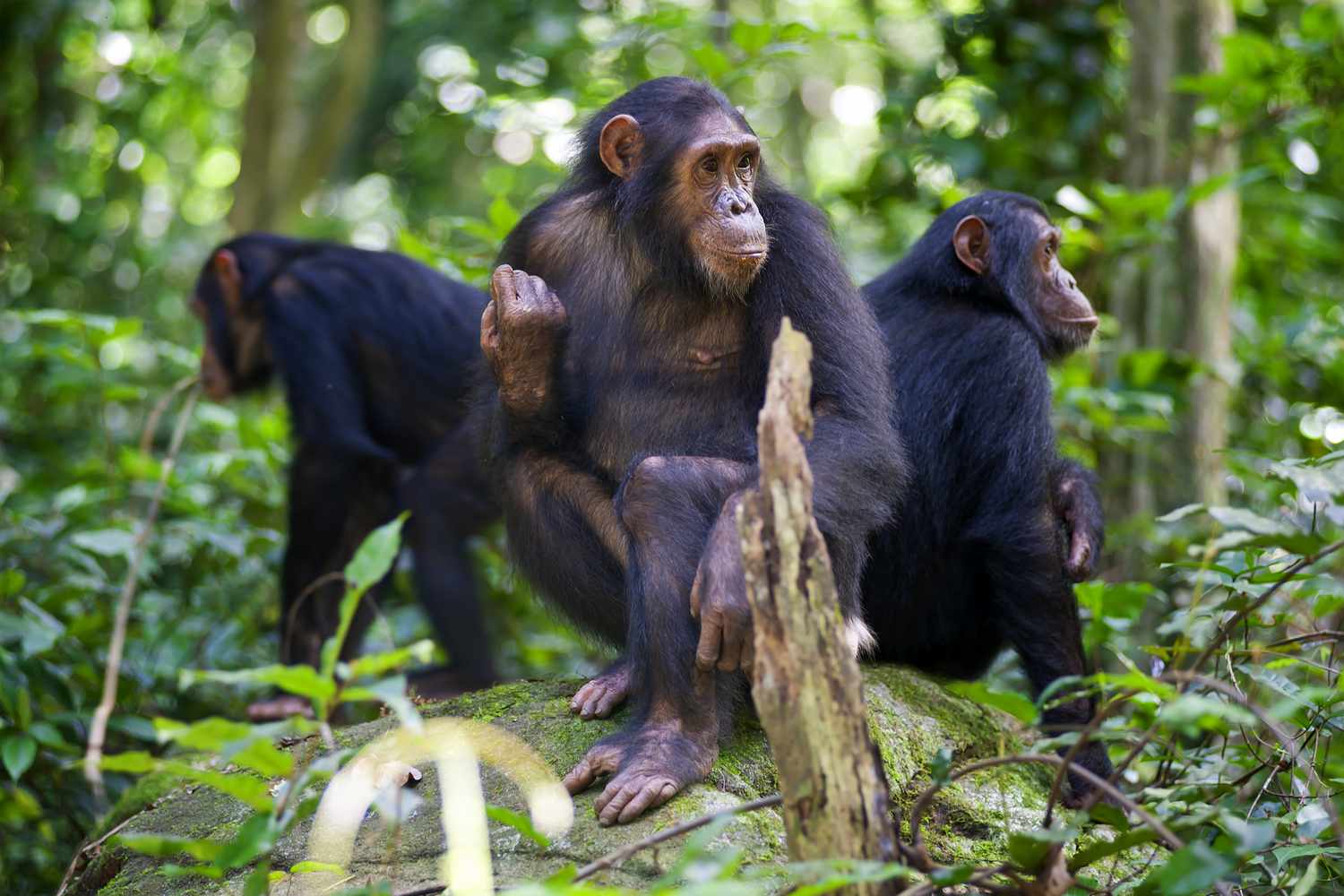
A Glimpse into Gombe's Wonders
- Pristine Natural Beauty: Gombe National Park is renowned for its stunning landscapes. The park's lush, evergreen forests are interspersed with open woodlands and steep valleys, creating a picturesque setting that captivates visitors. The pristine waters of Lake Tanganyika, the world’s longest and second-deepest freshwater lake, provide a striking backdrop and offer opportunities for swimming and snorkeling.
- Wildlife and Biodiversity: Gombe is most famous for its chimpanzees. Made internationally renowned by the groundbreaking research of Dr. Jane Goodall, who began her study of the park's chimpanzee population in 1960, Gombe offers a rare chance to observe these fascinating primates in their natural habitat. Visitors can track and watch the chimpanzees, gaining insight into their social structures and behaviors. In addition to chimpanzees, Gombe is home to a variety of other wildlife including olive baboons, red-tailed monkeys, and vervet monkeys. Birdwatchers will delight in the over 200 species of birds found in the park, ranging from fish eagles to palm-nut vultures.
- Hiking and Adventure: Gombe’s rugged terrain and network of trails provide excellent hiking opportunities. One of the most popular hikes is to the Kakombe Waterfall, where visitors can enjoy the serene beauty and refreshing waters of this natural feature. For those seeking more adventure, the trek to Jane’s Peak offers breathtaking panoramic views of the park and Lake Tanganyika.
- Cultural and Historical Significance: Gombe National Park is a site of significant scientific and historical importance. Dr. Jane Goodall's pioneering work here has not only contributed immensely to our understanding of primates but has also fostered a greater global awareness of conservation issues. Visitors can learn about her research and the ongoing efforts to protect the park’s unique ecosystem at the park’s research center.
Activities and Experiences
Visitors to Katavi National Park can enjoy a range of activities designed to immerse them in the natural beauty and wildlife of the area:
- Game Drives: Experience the thrill of close-up encounters with wildlife on guided game drives through the park's diverse habitats.
- Walking Safaris: Explore the park on foot with an experienced guide, gaining a deeper understanding of the flora and fauna.
- Camping: For the adventurous, Katavi offers several campsites where you can sleep under the stars and listen to the sounds of the wild.
Best Time to Visit
The best time to visit Gombe is during the dry season, from May to October, when the trails are less muddy and the weather is more favorable for trekking and wildlife viewing. However, the park is open year-round, and each season offers its own unique experiences.
Getting There
Gombe National Park is accessible by boat from the town of Kigoma, which has connections to major Tanzanian cities by air and rail. The boat ride itself is an adventure, offering stunning views of Lake Tanganyika.
Conservation Efforts
Visitors to Gombe National Park contribute to vital conservation efforts. The park’s entrance fees and other revenues support ongoing research and conservation programs aimed at protecting its wildlife and habitats for future generations.
Accommodation
A range of accommodation options are available to suit different tastes and budgets, from luxury lodges to tented camps, all designed to provide comfort while blending seamlessly with the natural surroundings.
Conclusion
Discover the magic of Gombe National Park, where the natural world and human curiosity intertwine. Whether you're here to follow in the footsteps of Jane Goodall, embark on a thrilling adventure, or simply soak in the beauty of nature, Gombe promises an unforgettable experience. Plan your visit today and become part of the legacy of this extraordinary place.
Ruaha National Park Overview
Ruaha National Park, located in central Tanzania, is a breathtaking and diverse wildlife sanctuary, offering visitors an unparalleled safari experience. Covering approximately 20,226 square kilometers (7,809 square miles), it is the largest national park in Tanzania and one of the most expansive protected areas in Africa. This majestic park is a hidden gem, showcasing the raw beauty of Tanzania's wilderness.
Slideshow Gallery
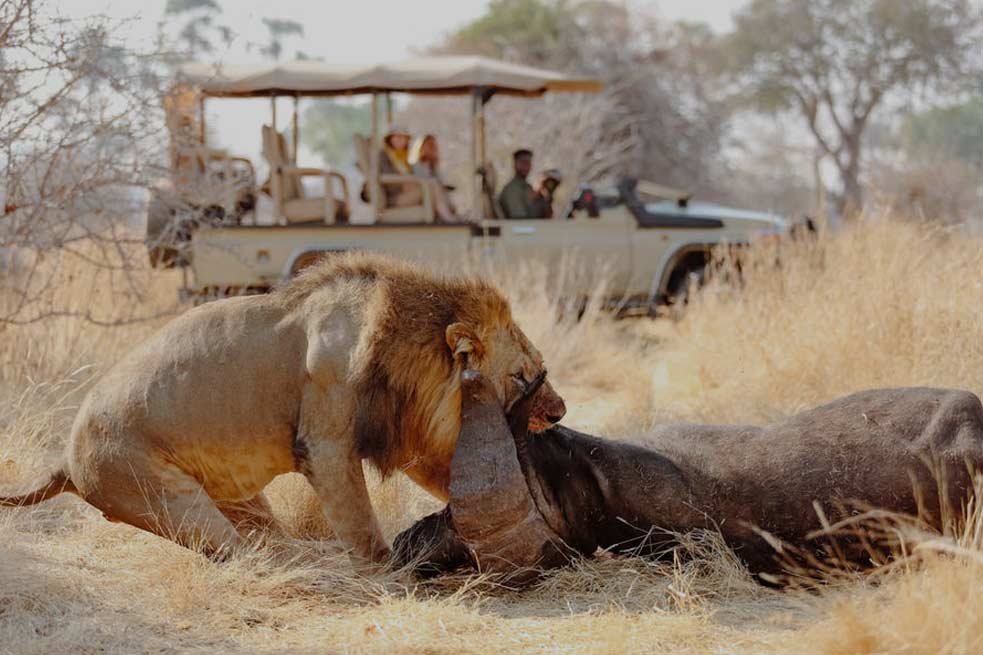
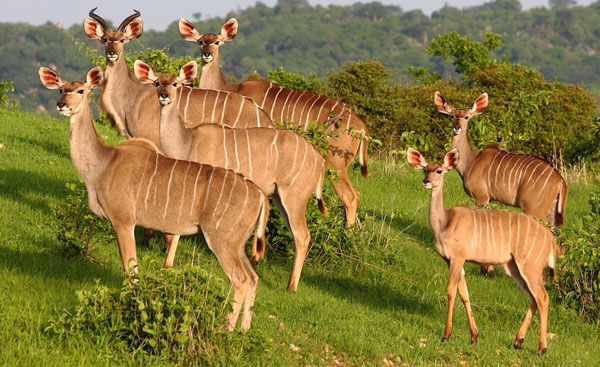
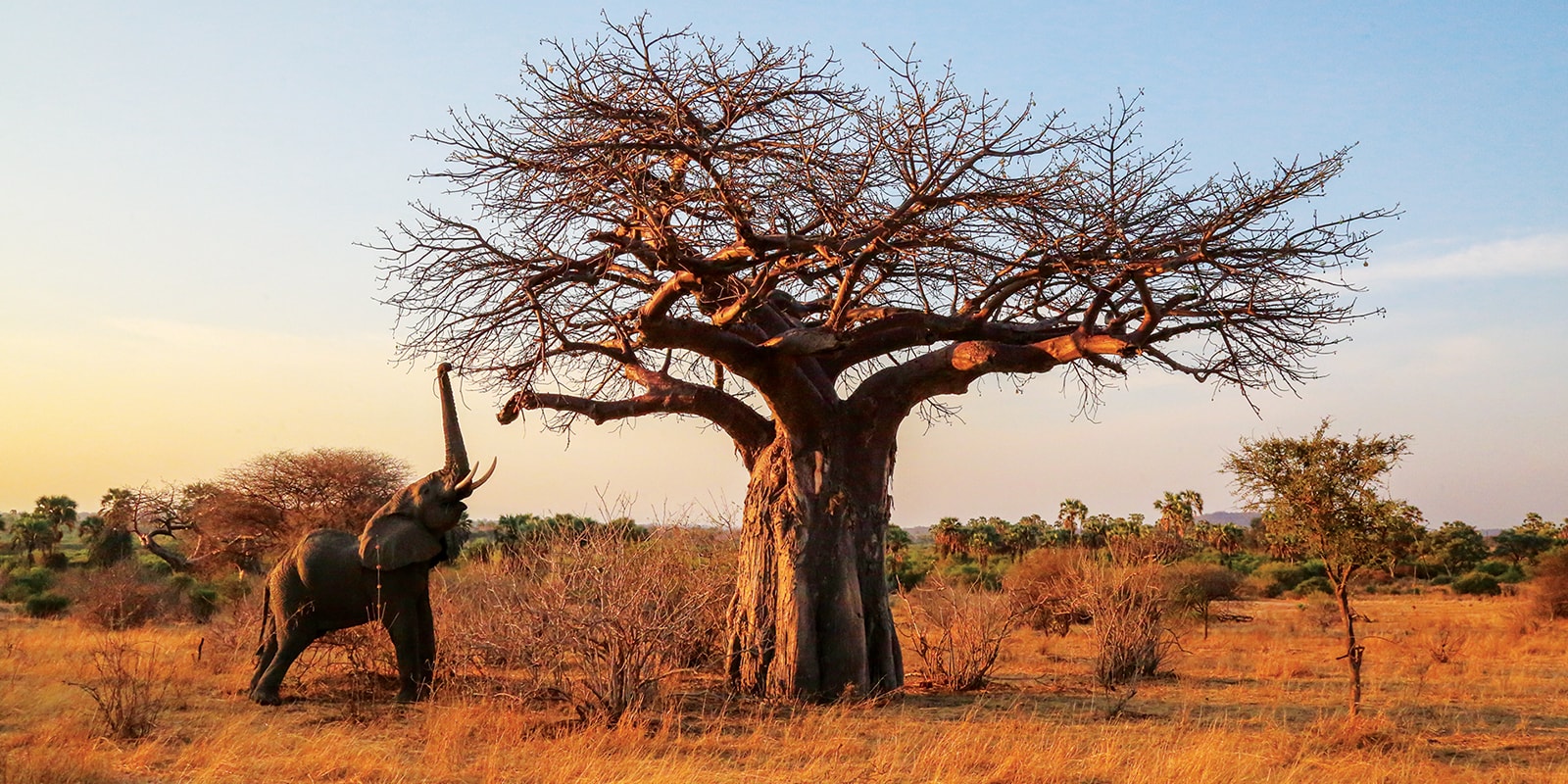
Landscapes and Scenery
The park's landscapes are as diverse as its wildlife. The Great Ruaha River, which flows through the park, is a vital water source and a focal point for game viewing. The river is flanked by baobabs, acacias, and the iconic miombo woodlands, creating a picturesque backdrop for safaris. The park also features rolling hills, open plains, and rocky outcrops, offering breathtaking views and photo opportunities.
Activities
Ruaha National Park provides a range of activities for visitors to immerse themselves in its natural beauty:
- Game Drives: Explore the park's vast terrain on guided game drives, available during the day and at night.
- Walking Safaris: Experience the wilderness up close with guided walking safaris, ideal for observing smaller creatures and plants.
- Bird Watching: Take dedicated bird-watching tours to discover the park's avian diversity.
- Photography: Capture the stunning landscapes and abundant wildlife through photography safaris.
Best Time to Visit
The best time to visit Ruaha is during the dry season, from June to October, when wildlife congregates around water sources, making game viewing more predictable and rewarding. The wet season, from November to May, brings lush landscapes and is ideal for bird watching.
Getting There
Ruaha National Park is accessible by both road and air. The park is approximately a 10-hour drive from Dar es Salaam or a short flight from Dar es Salaam or Arusha to the park's airstrips.
Conservation Efforts
Ruaha National Park is not only a haven for wildlife but also a crucial conservation area. Efforts to protect endangered species and preserve the park's ecosystem are ongoing. Additionally, the park supports local communities through tourism initiatives, helping to promote sustainable development and conservation awareness.
Accommodation
The park offers various accommodation options to suit different preferences and budgets. Visitors can choose from luxury lodges, tented camps, and budget-friendly campsites, all providing comfortable stays amidst the wilderness.
Conclusion
Ruaha National Park offers an unforgettable safari experience with its rich biodiversity, stunning landscapes, and commitment to conservation. Whether you are an avid wildlife enthusiast, a keen bird watcher, or a nature lover, Ruaha promises an adventure that will leave you with lasting memories.